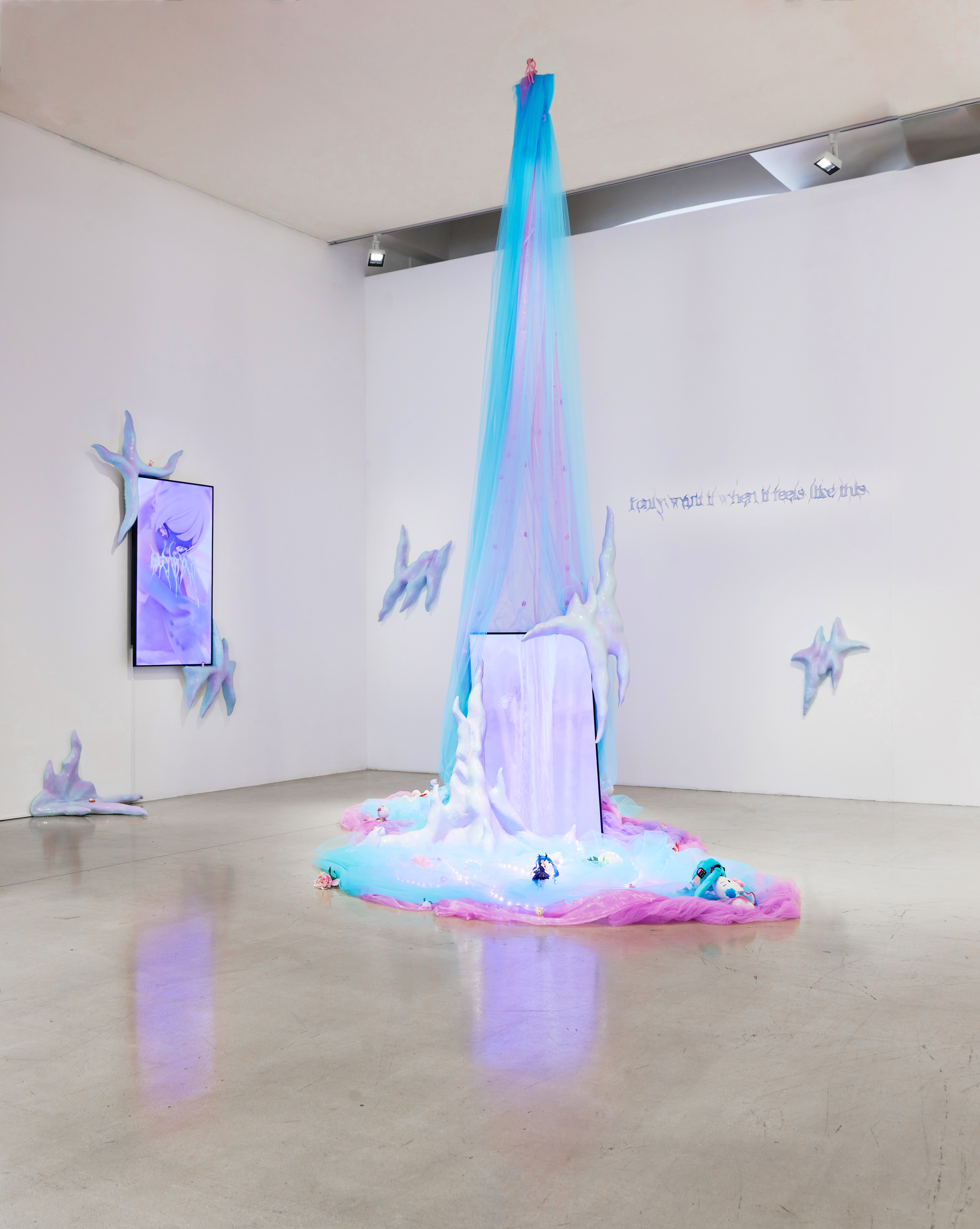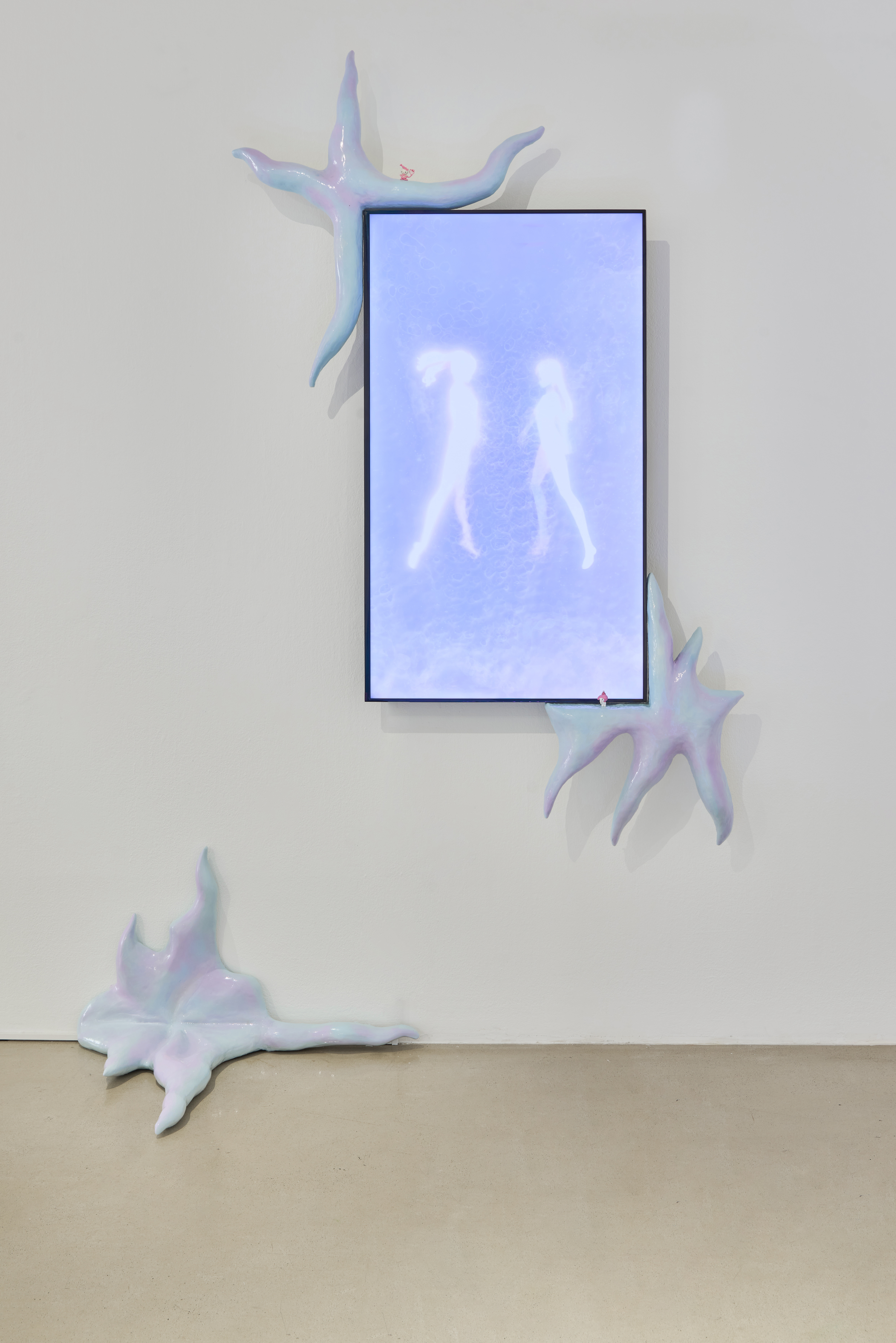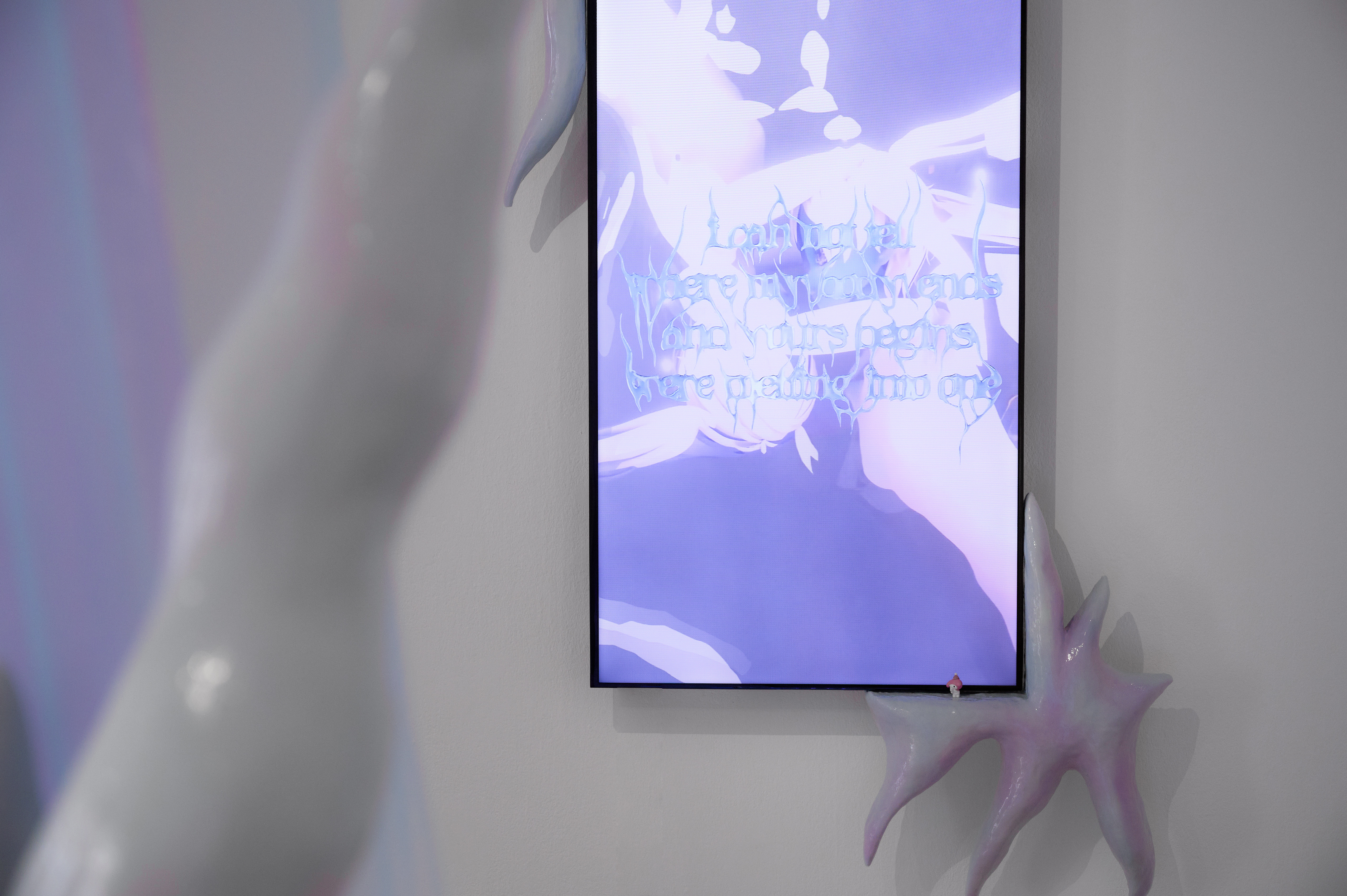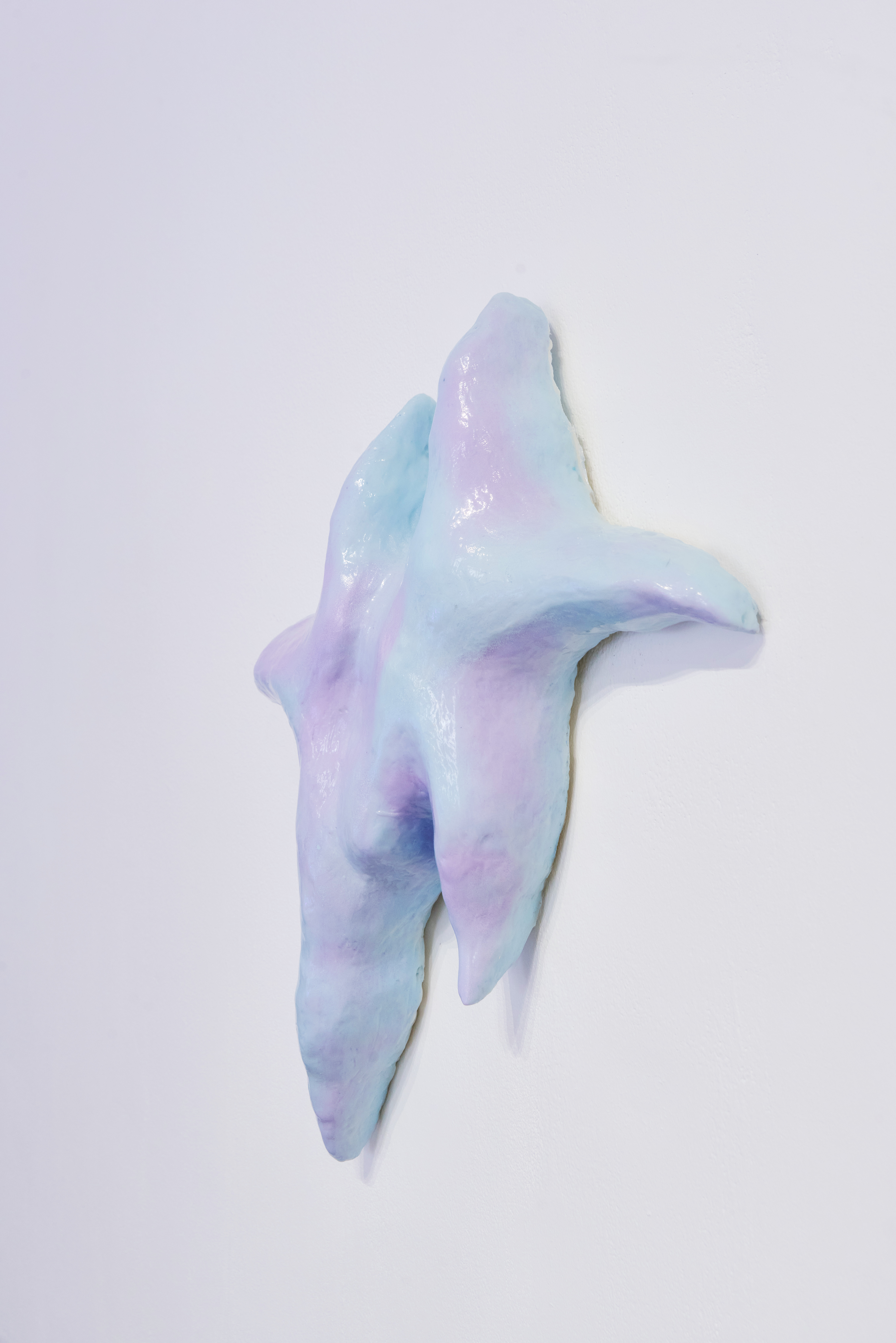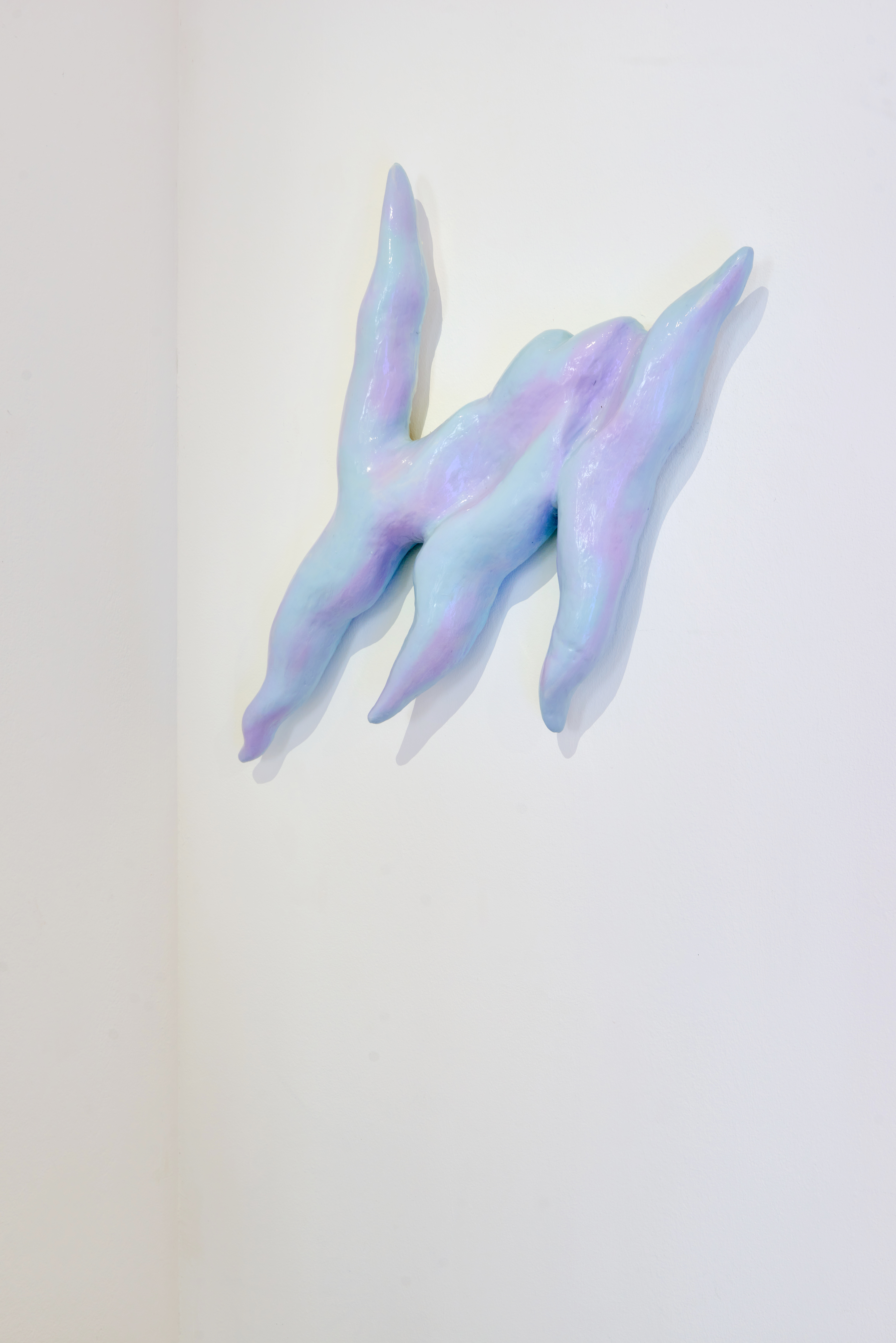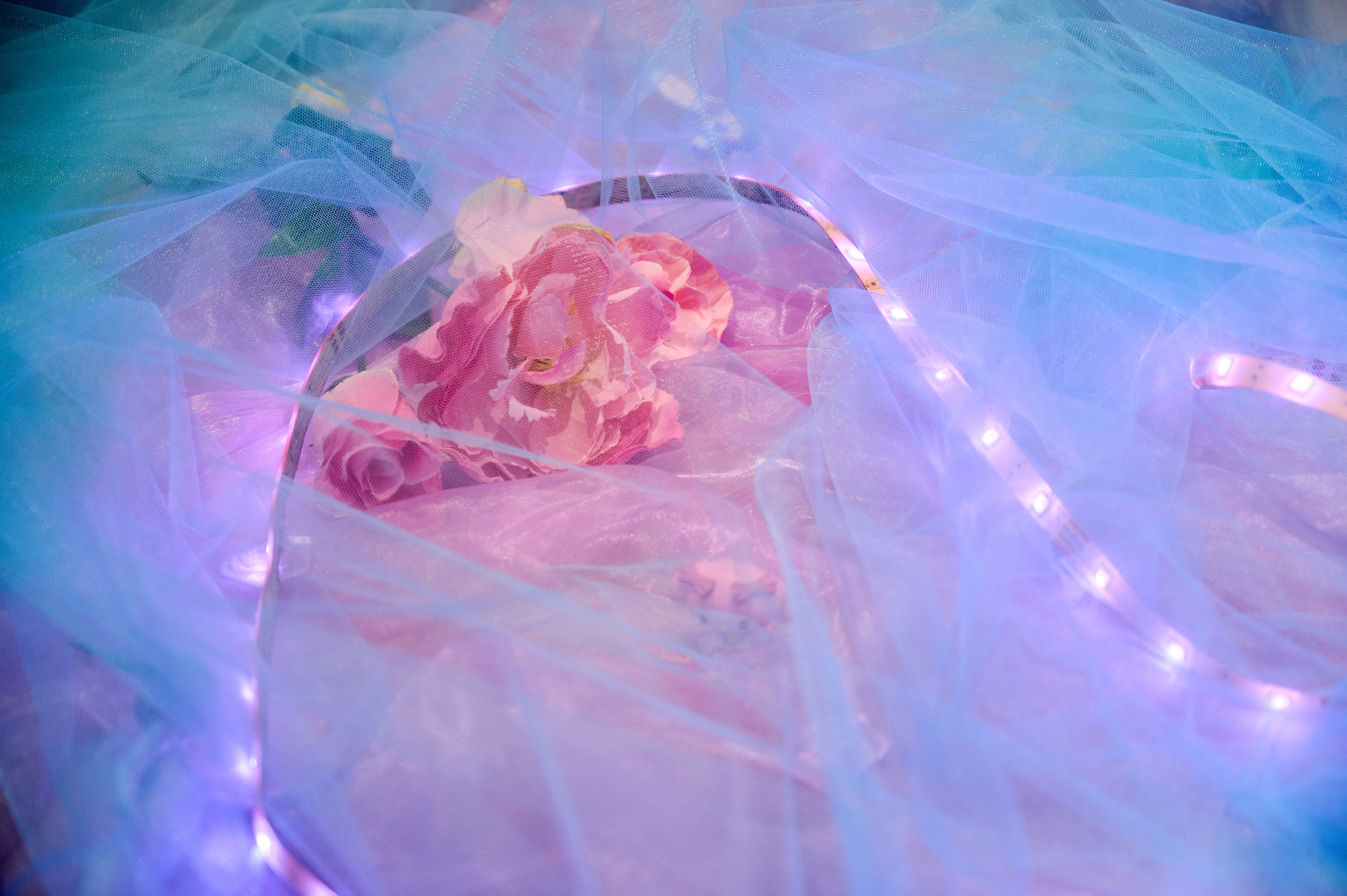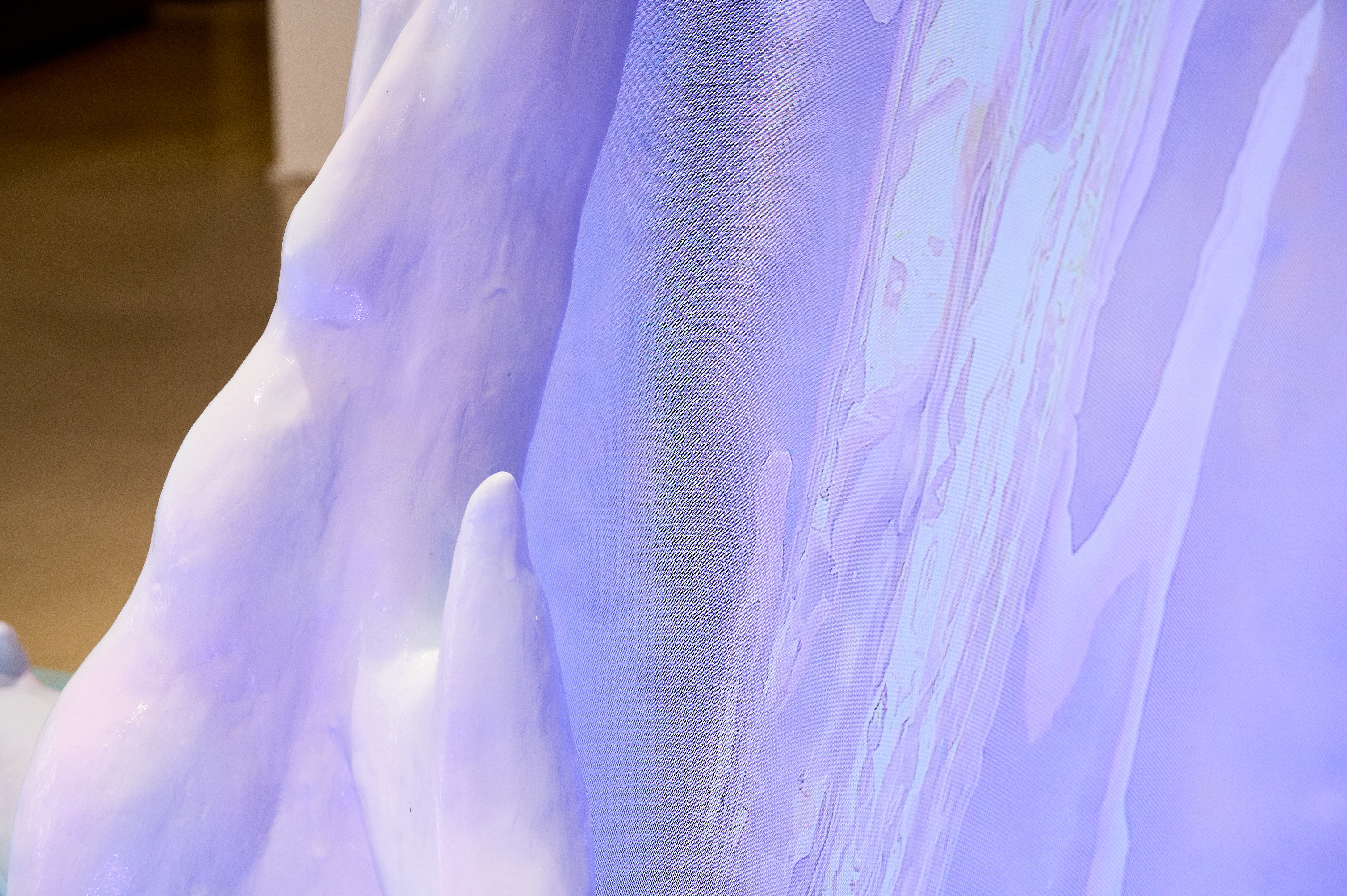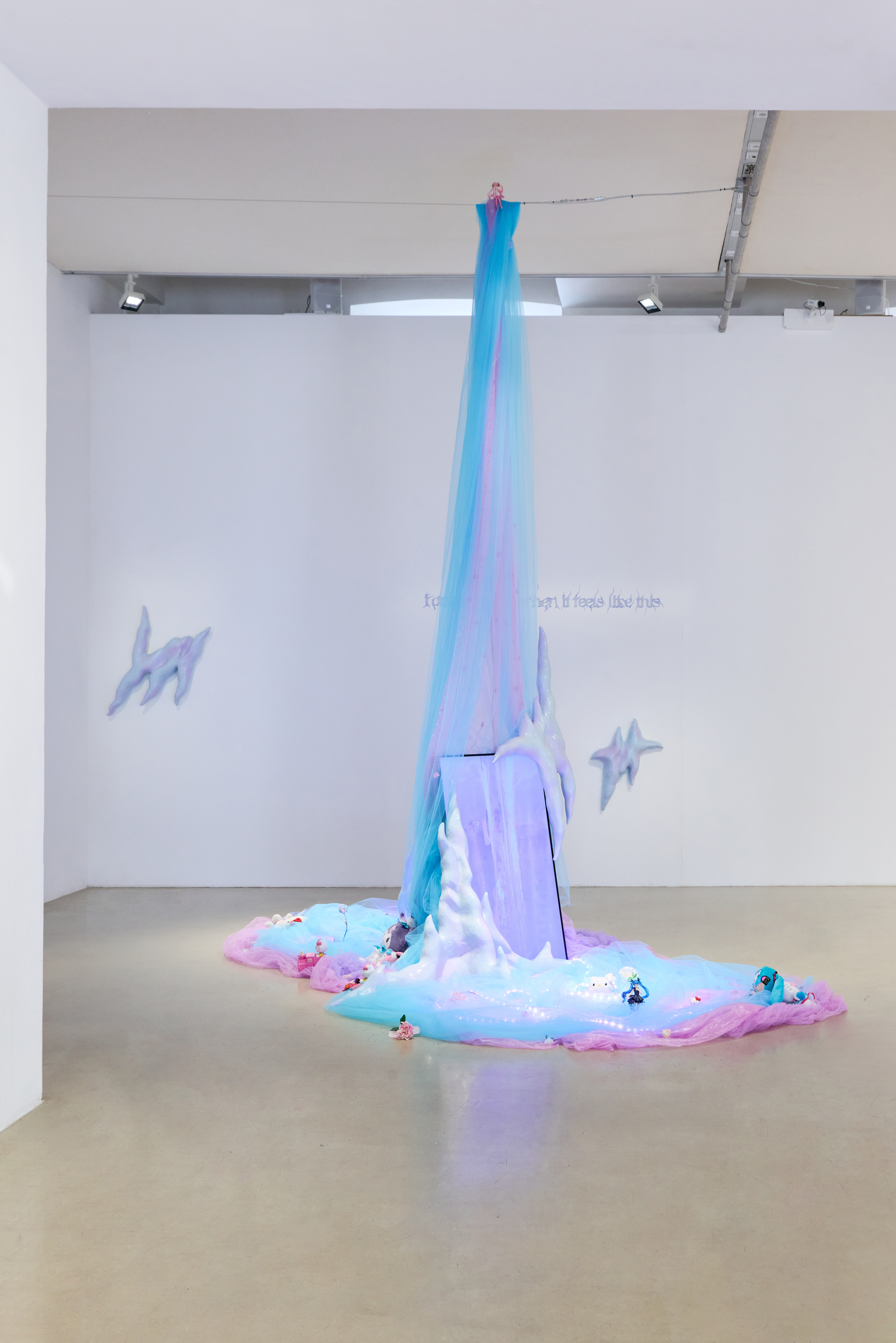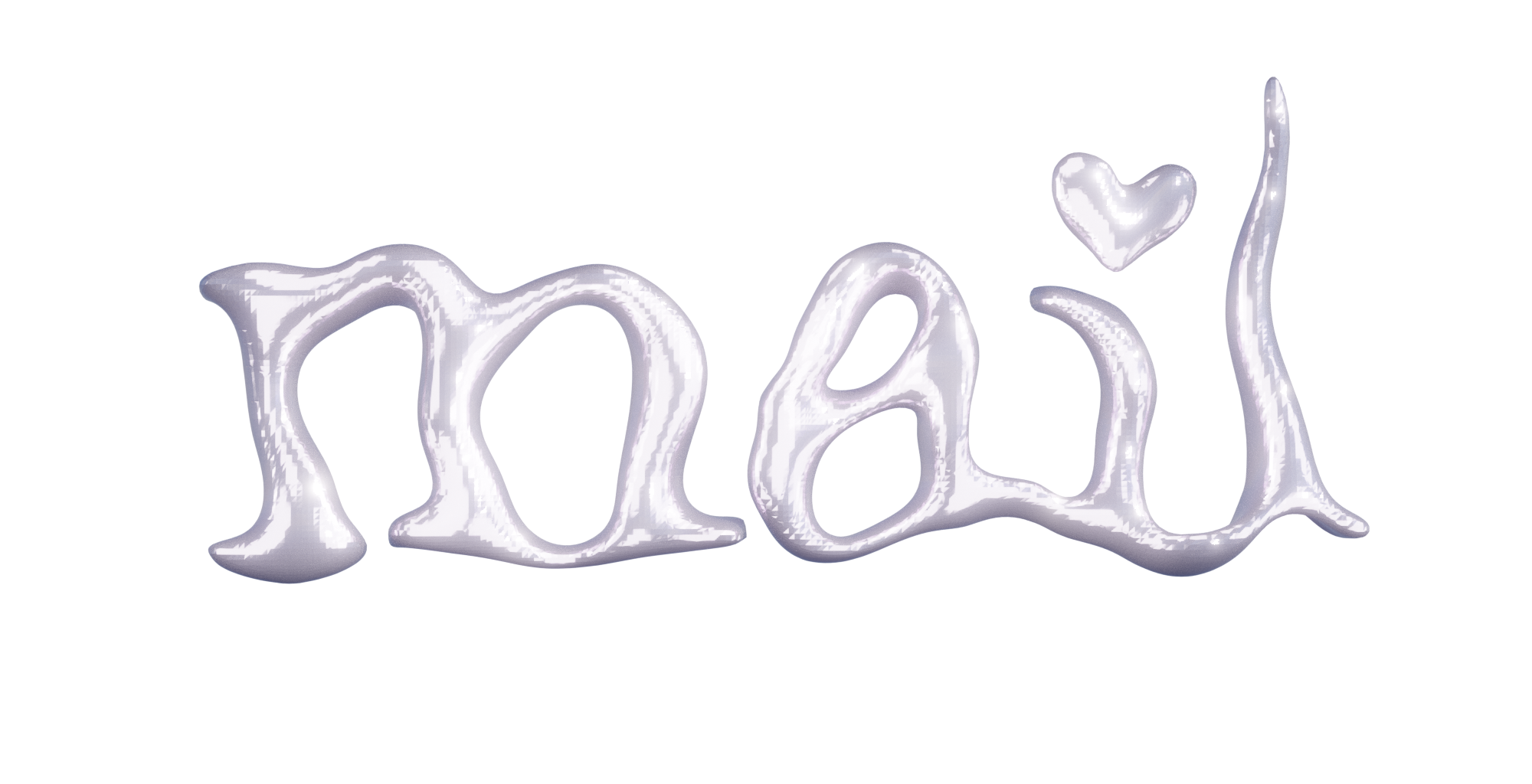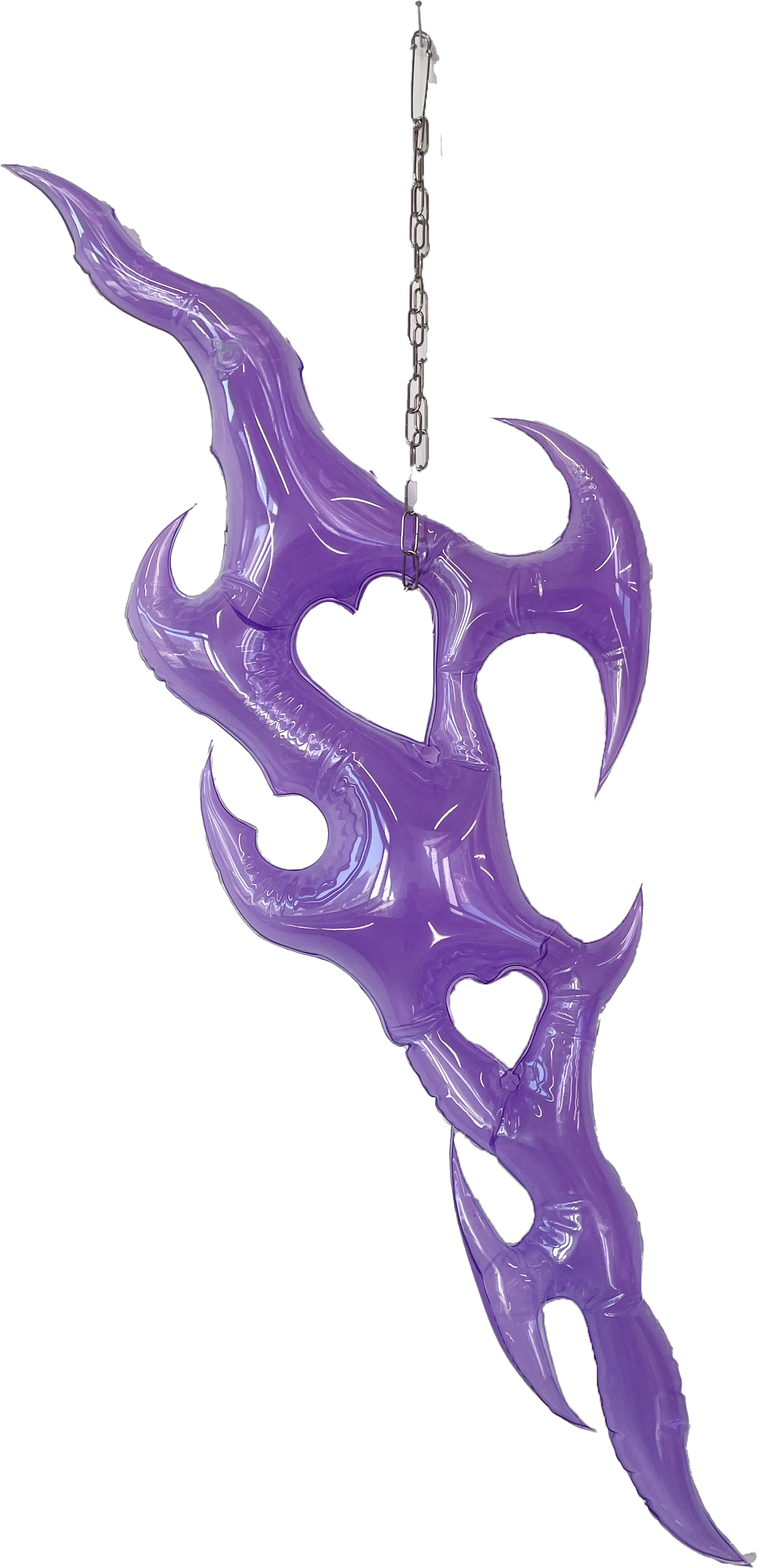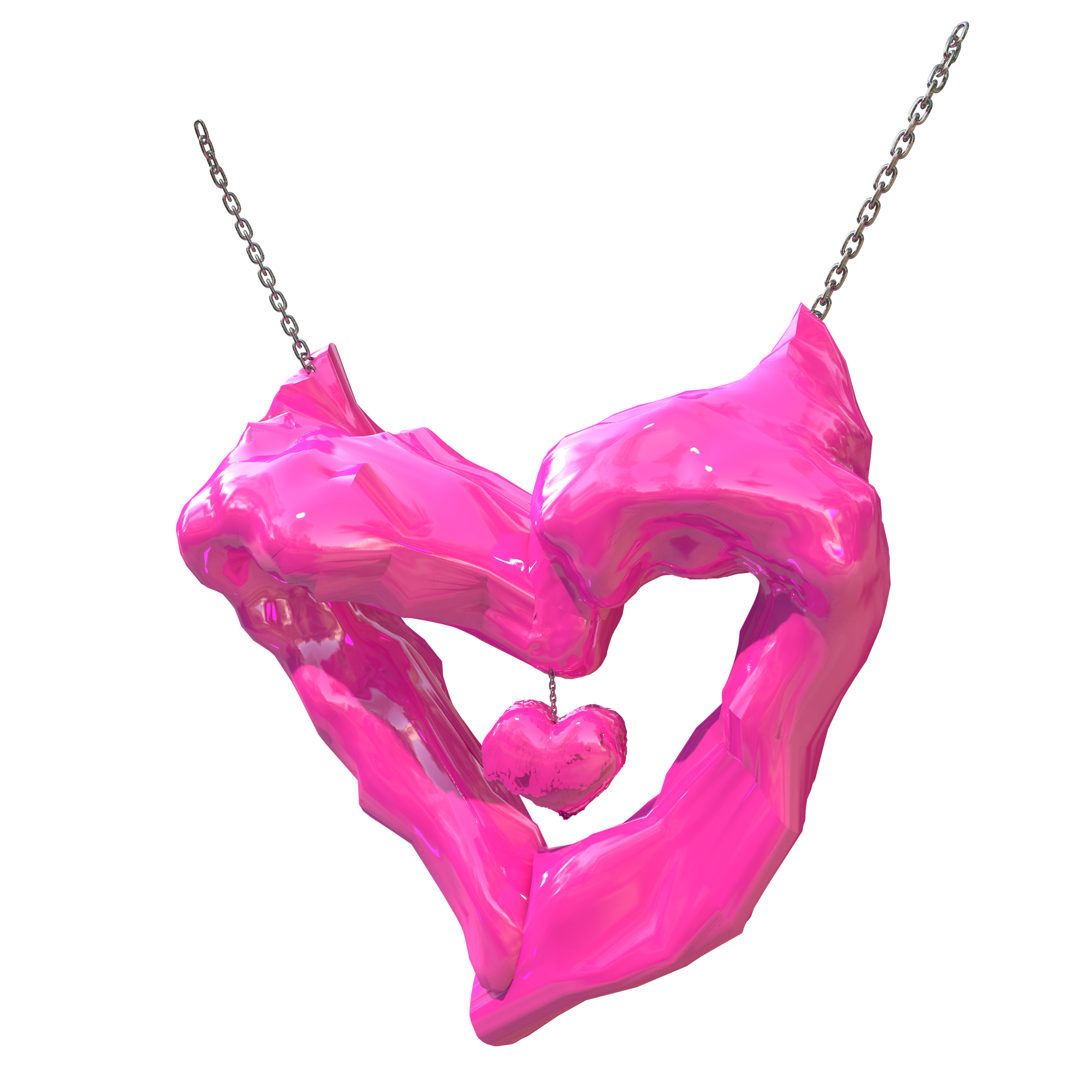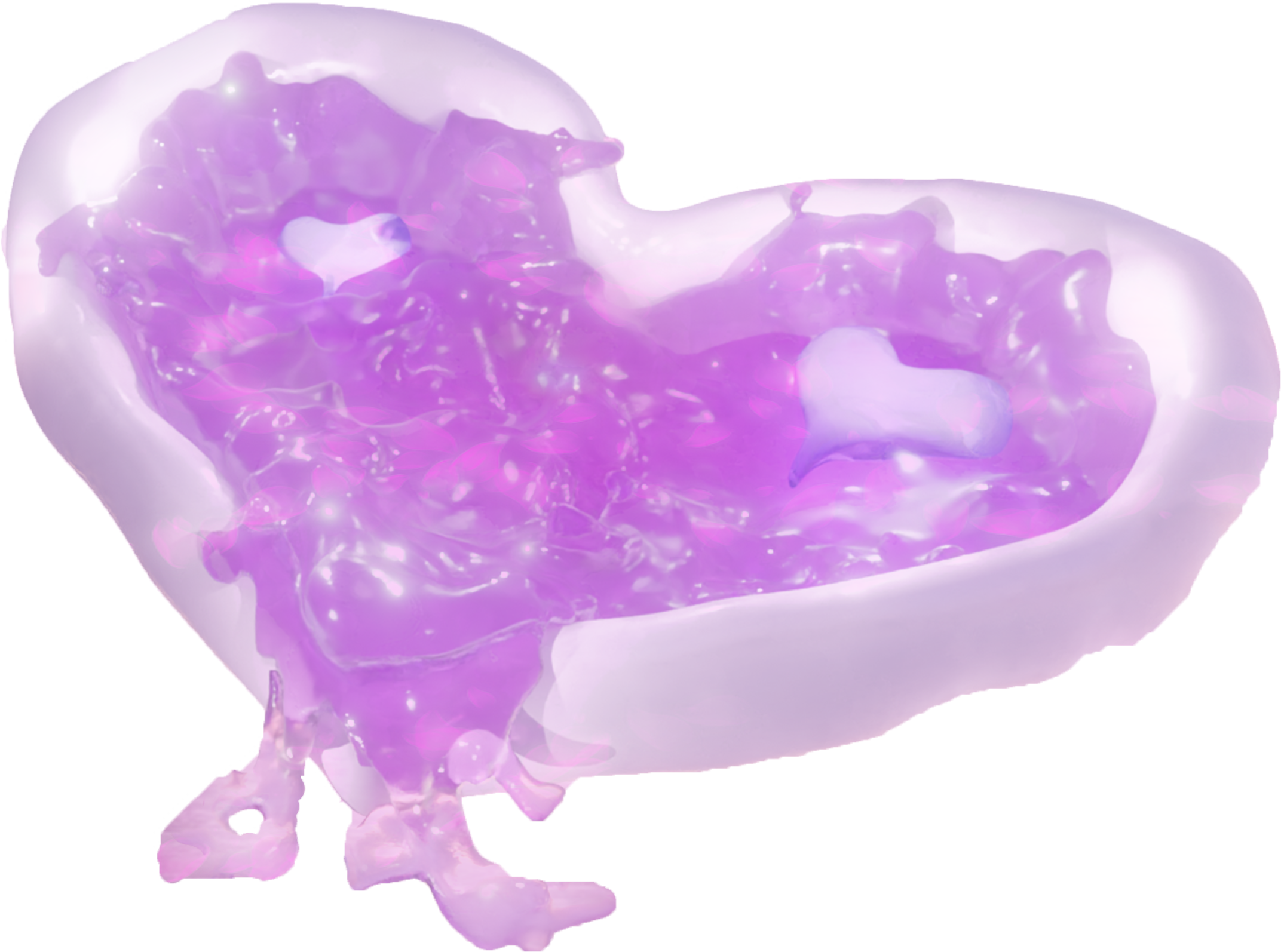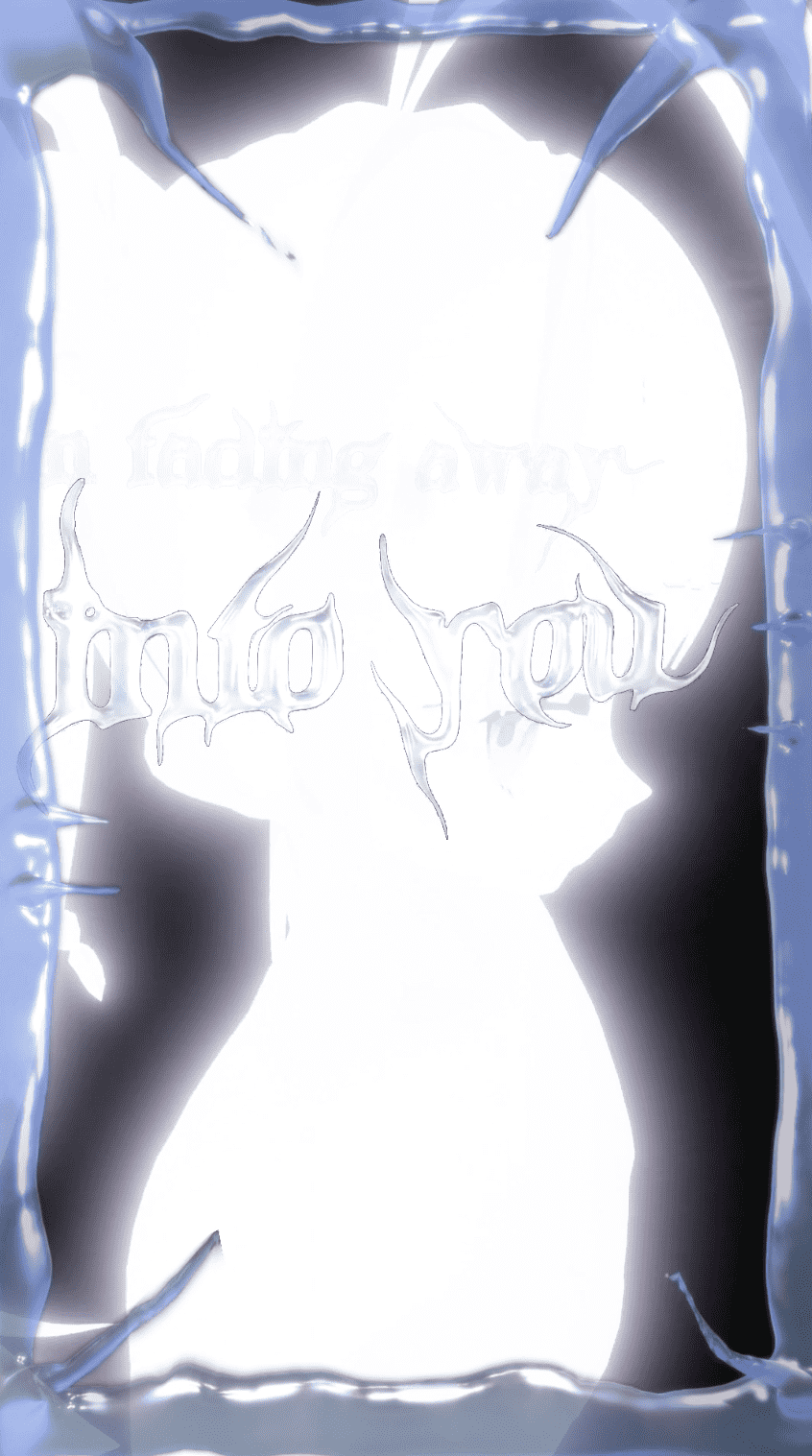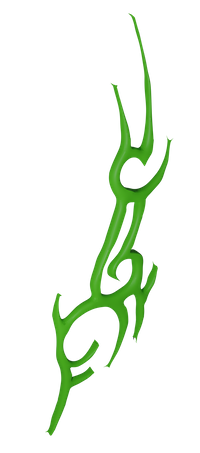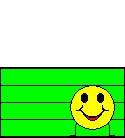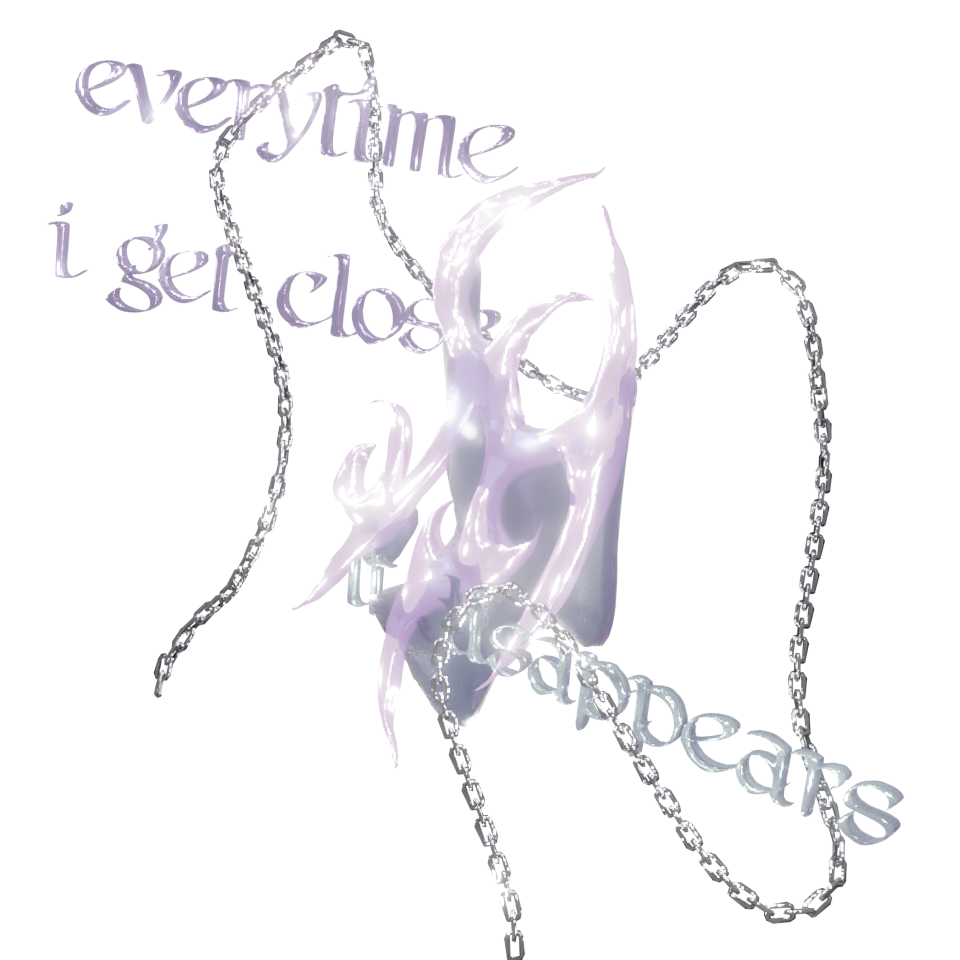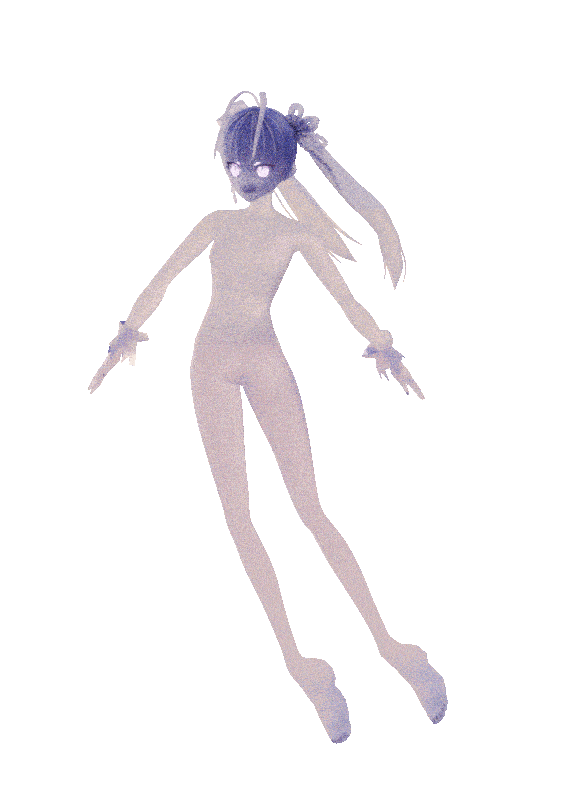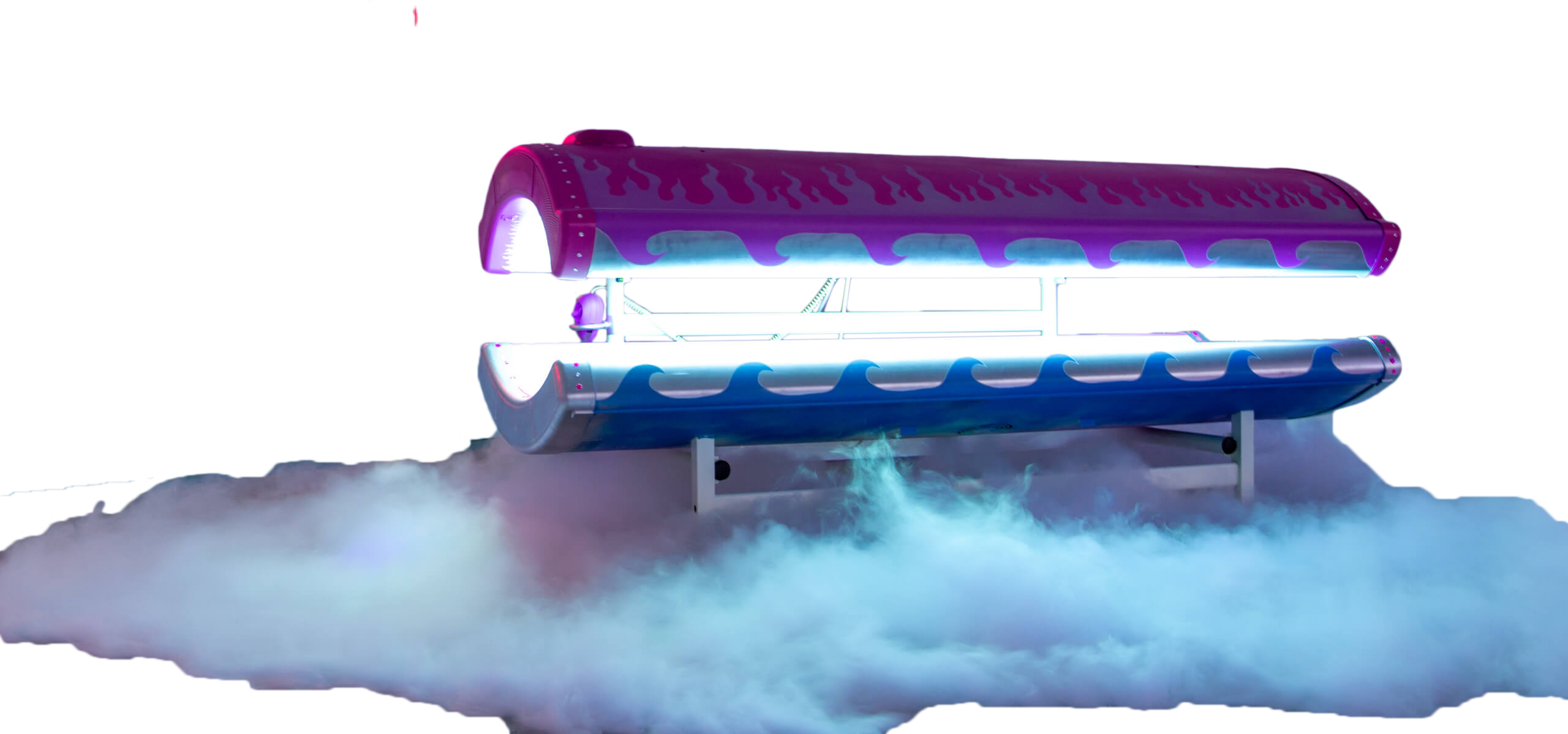Hannah Neckel, based online as @cybervoid69 is transmedia artist and worldbuilder working inbetween on & offline realms, creating emotionally infectious experiences, flowing out of the internet through the screen into the physcial world video, from me to you. Her practice explores desire as a tool for queer futurity through modes of hyperstition ~ melting the utopian promise of the internet into material form, speculative yearning circulates until it will manifest as reality.
⁺˚*•̩̩͙✩•̩̩͙*˚⁺‧͙⁺˚*•̩̩͙♡•̩̩͙*˚⁺‧͙⁺˚*•̩̩͙✩•̩̩͙*˚⁺‧͙
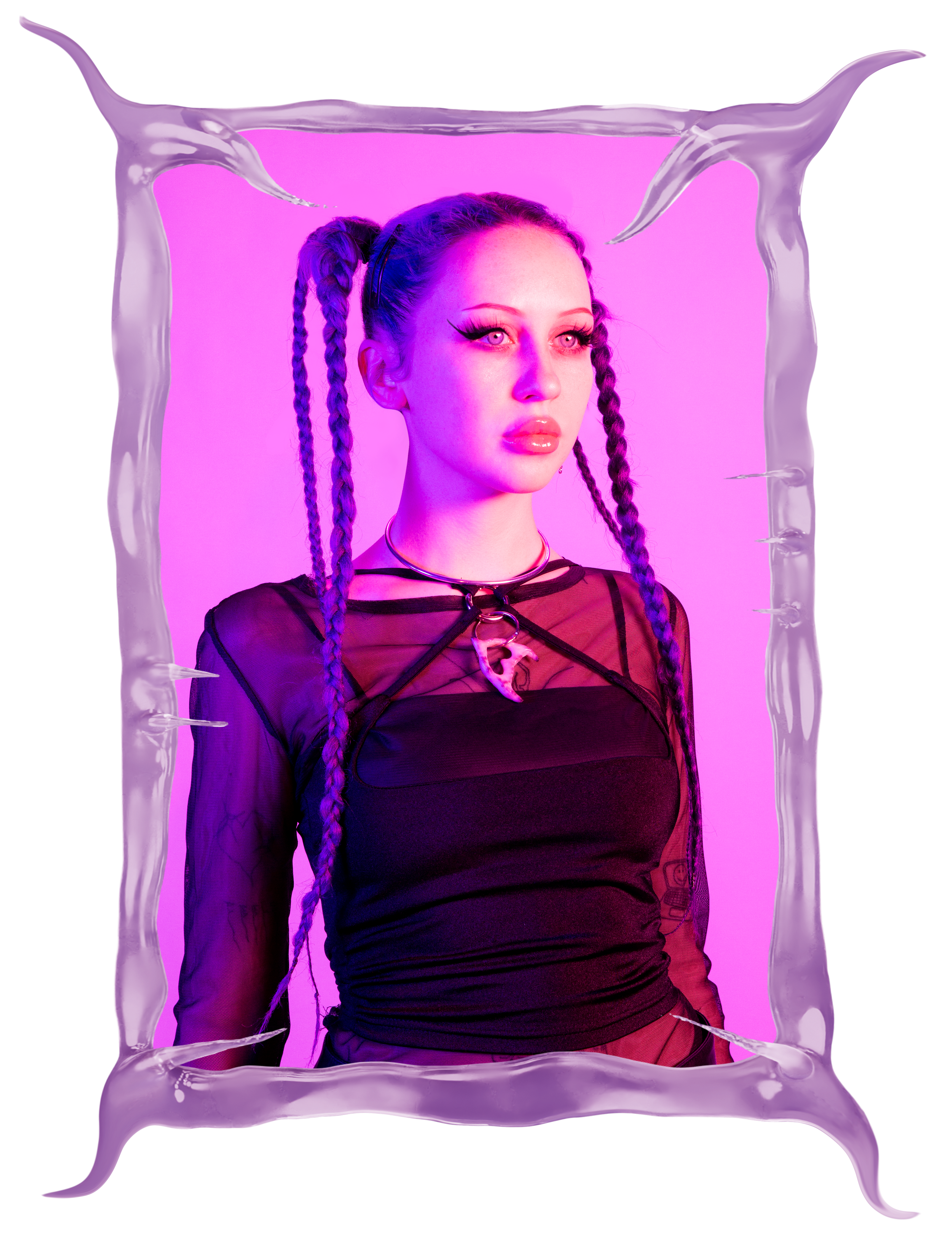
⁺˚*•̩̩͙✩•̩̩͙*˚⁺‧͙⁺˚*•̩̩͙♡•̩̩͙*˚⁺‧͙⁺˚*•̩̩͙✩•̩̩͙*˚⁺‧͙
Hannah Neckel
based in Vienna ~&~ Online
studied Transmedia Art
at the University of Applied Arts in the class of Brigitte Kowanz & Jakob Lena Knebl and graduated with Honors Master of Fine Art in 2025
She is a member of the interdisciplinary artist-led collective room69
⁺˚*•̩̩͙✩•̩̩͙*˚⁺‧͙⁺˚*•̩̩͙♡•̩̩͙*˚⁺‧͙⁺˚*•̩̩͙✩•̩̩͙*˚⁺‧͙
Her practice melts through the tension between the continuous cycle of downloading and uploading: archiving, saving, and preserving ↔ creating, sharing, and contributing. This recursive modality functions as a hyperstitional feedback loop, where digital desires, imaginaries, and theories generate new ontologies of relation, presence and reality.
Integrating philosophical research, endless writing, virtual rendering, and sculptural fabrication into a fluid praxis, her work collapses the boundaries of consumption and production, reception and transmission. The archive becomes a dynamic ecosystem of queer persistence & community, accumulation and circulation act as strategies of survival and speculative construction.
Integrating philosophical research, endless writing, virtual rendering, and sculptural fabrication into a fluid praxis, her work collapses the boundaries of consumption and production, reception and transmission. The archive becomes a dynamic ecosystem of queer persistence & community, accumulation and circulation act as strategies of survival and speculative construction.
Within this expanded network, water emerges as both metaphor and operative material ~ an aqueous ontology through which desire, emotion, and data flow, destabilizing fixed boundaries. The installations enact the queer gaze as a world-making force, realizing utopia not as deferred fantasy but as a speculative present continuously lived into being.
⁺˚*•̩̩͙✩•̩̩͙*˚⁺‧͙⁺˚*•̩̩͙♡•̩̩͙*˚⁺‧͙⁺˚*•̩̩͙✩•̩̩͙*˚⁺‧͙
contact
instagram @cybervoid69
studio@hannahneckel.com
full portfolio & cv more information
on request
for business inquires please send a message via email
studio@hannahneckel.com
Unless otherwise noted, all photographs are by Hannah Neckel
Copyright of all Texts and Photos lies with Hannah Neckel
instagram @cybervoid69
studio@hannahneckel.com
full portfolio & cv more information
on request
for business inquires please send a message via email
studio@hannahneckel.com
Unless otherwise noted, all photographs are by Hannah Neckel
Copyright of all Texts and Photos lies with Hannah Neckel
✮*•̩̩͙✧•̩̩͙*˚✧*˚ 𝒇𝒍𝒐𝒂𝒕𝒊𝒏𝒈 𝒕𝒉𝒓𝒐𝒖𝒈𝒉 𝒓𝒆𝒂𝒍𝒊𝒕𝒚 ˚*✧˚*•̩̩͙✧•̩̩͙*˚✮
2024
full room installation
in collaboration with
Lea Neckel
commissioned by Kulturbetriebe Burgenland
and exhibited at
Landesgalerie Burgenland
“✮*•̩̩͙✧•̩̩͙*˚✧*˚ floating through reality ˚*✧˚*•̩̩͙✧•̩̩͙*˚✮”
Landesgalerie Burgenland
Eisenstadt, AT
press
full room installation
in collaboration with
Lea Neckel
commissioned by Kulturbetriebe Burgenland
and exhibited at
Landesgalerie Burgenland
“✮*•̩̩͙✧•̩̩͙*˚✧*˚ floating through reality ˚*✧˚*•̩̩͙✧•̩̩͙*˚✮”
Landesgalerie Burgenland
Eisenstadt, AT
press
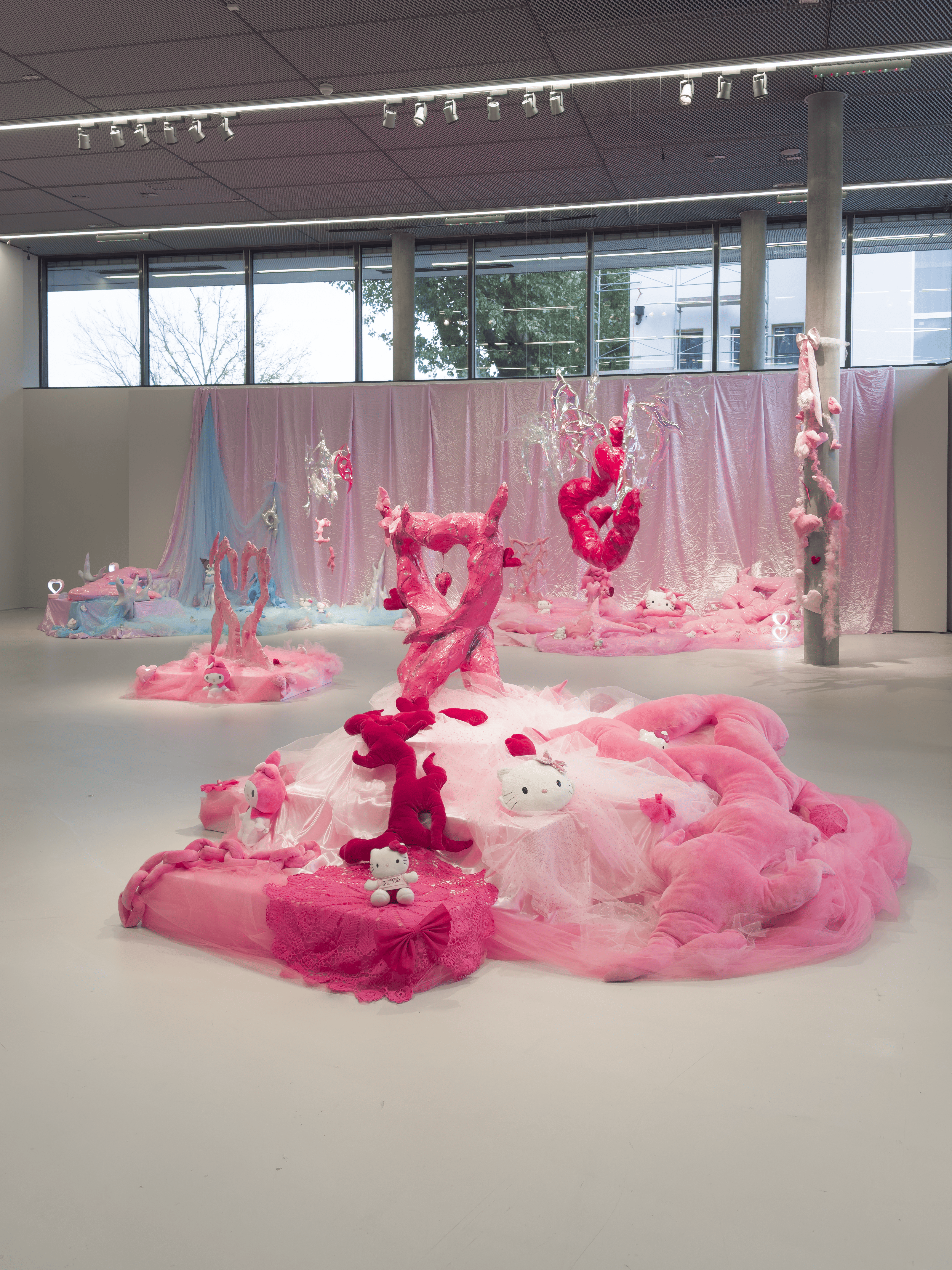
Since its creation, Eisenstadt Castle Park has combined nature and technical progress as a mirror to the world in a paradisiacal form. The Herzerlteich pond, romantically hidden in the park, is at the center of the exhibition ✮*-̩̩͙✧-̩̩͙*˚✧*˚ floating through reality ˚*✧˚*-̩̩͙✧-̩̩͙*˚✮, as a symbol of the symbiosis of technology and nature, man and progress.
The water of the future flows through the changing installation. In this way, Hannah and Lea Neckel create a space that makes it possible to dream present-day utopias and generate new realities.
Through the lens of hydrofeminism, they show how water connects people as a universal element, reflecting the role of the internet as a modern parallel of this force.
Through the lens of hydrofeminism, they show how water connects people as a universal element, reflecting the role of the internet as a modern parallel of this force.
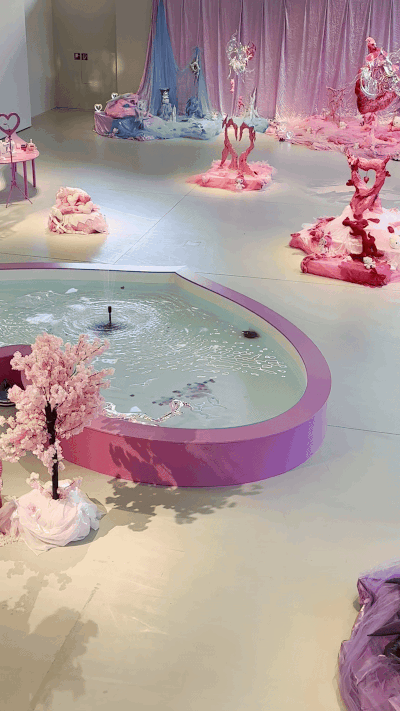
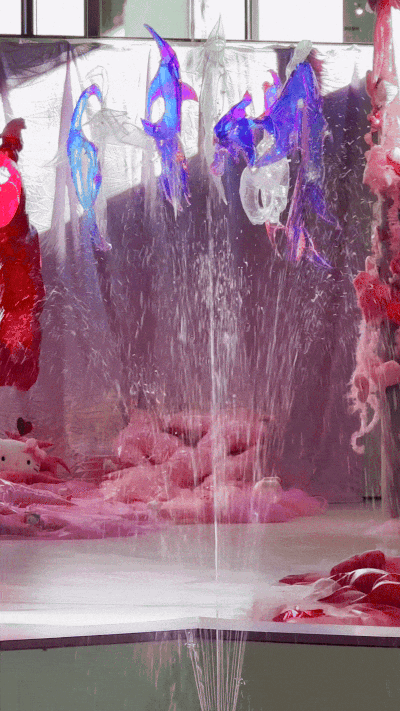
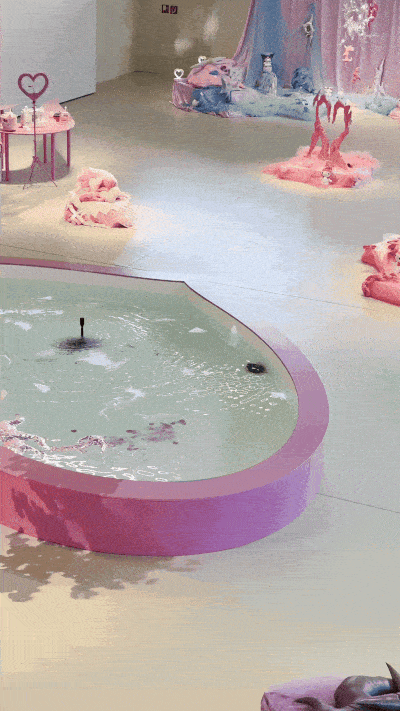
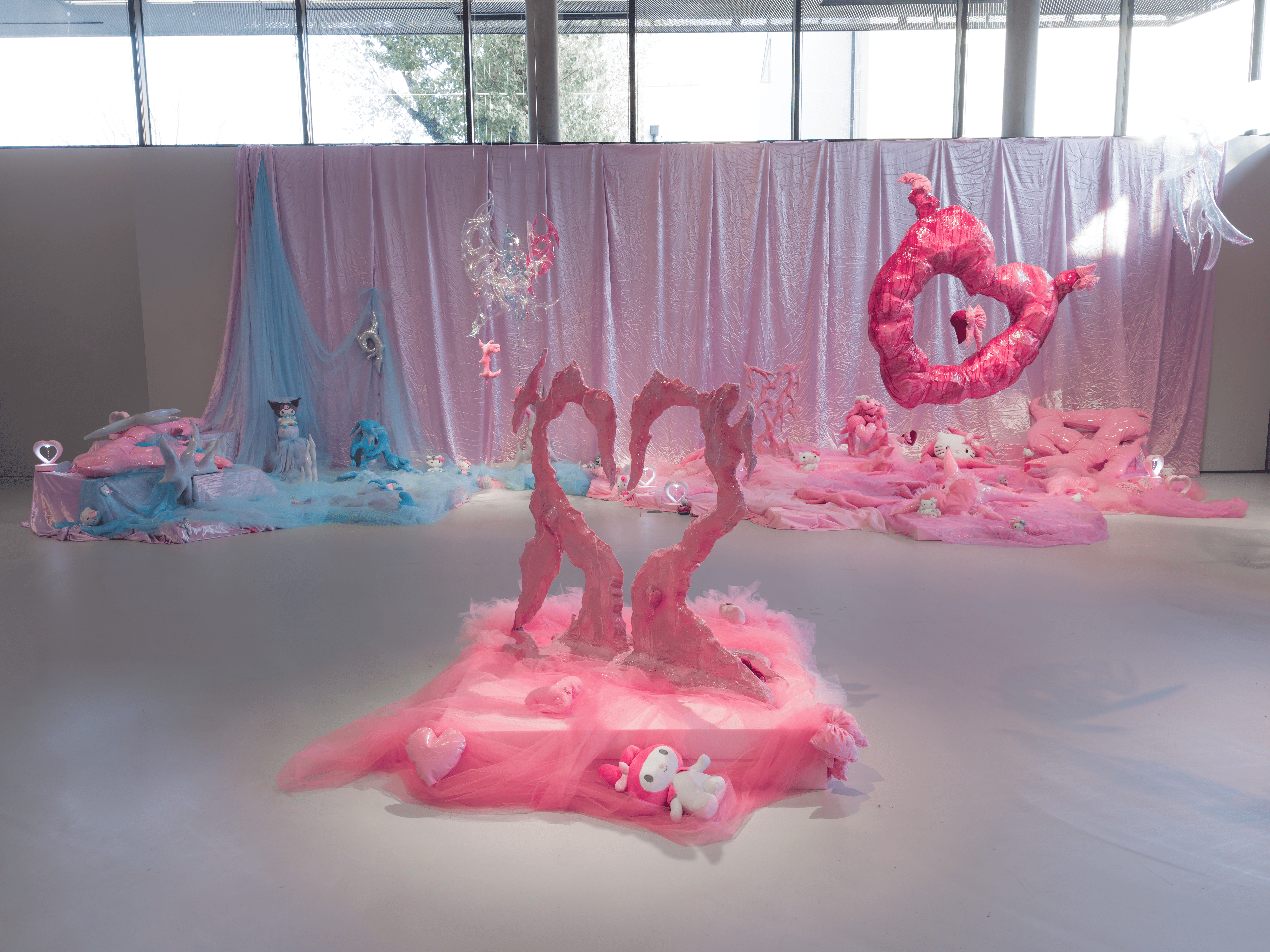
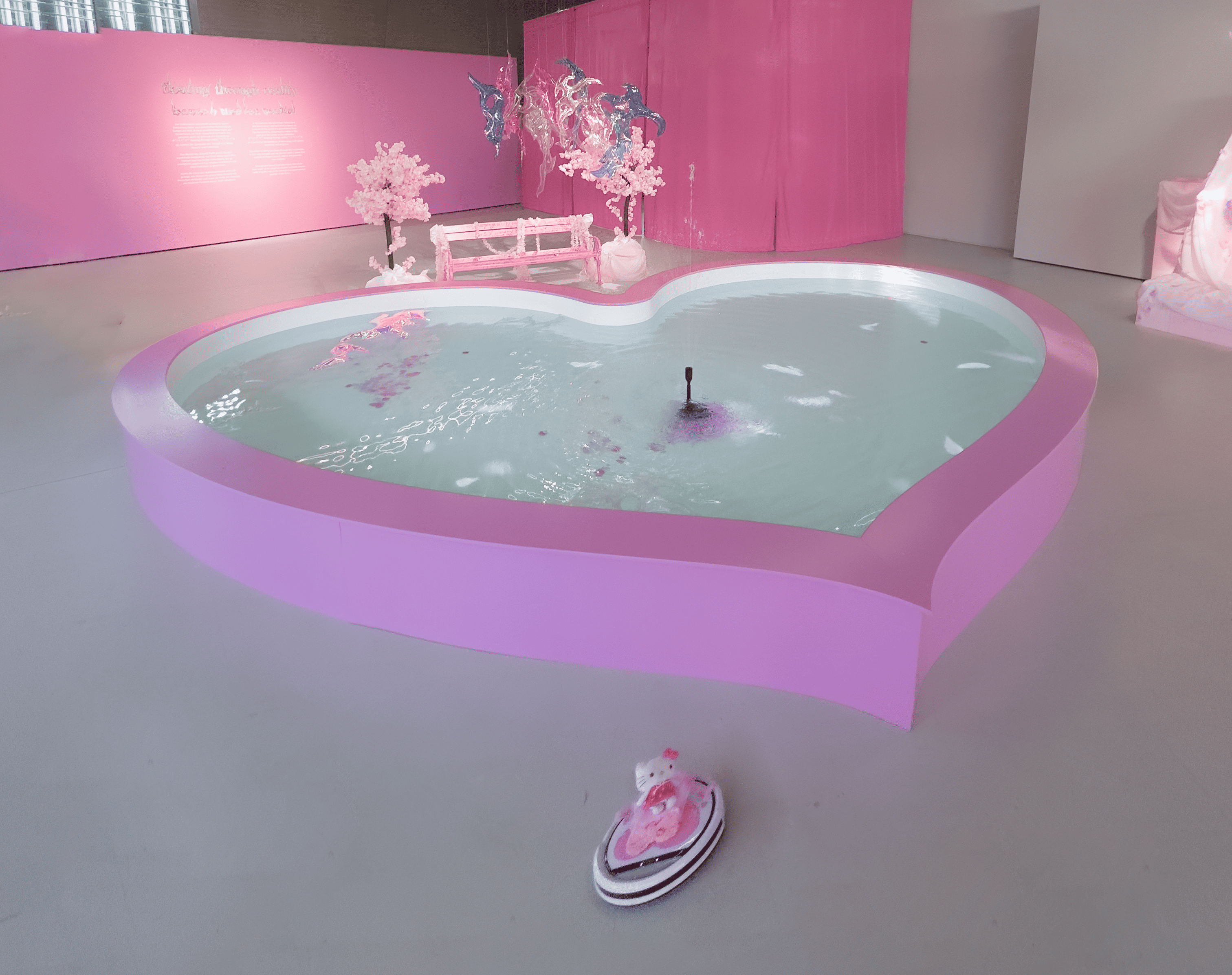
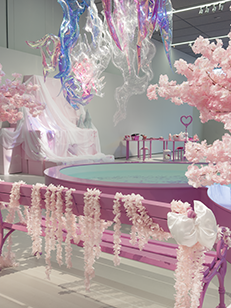
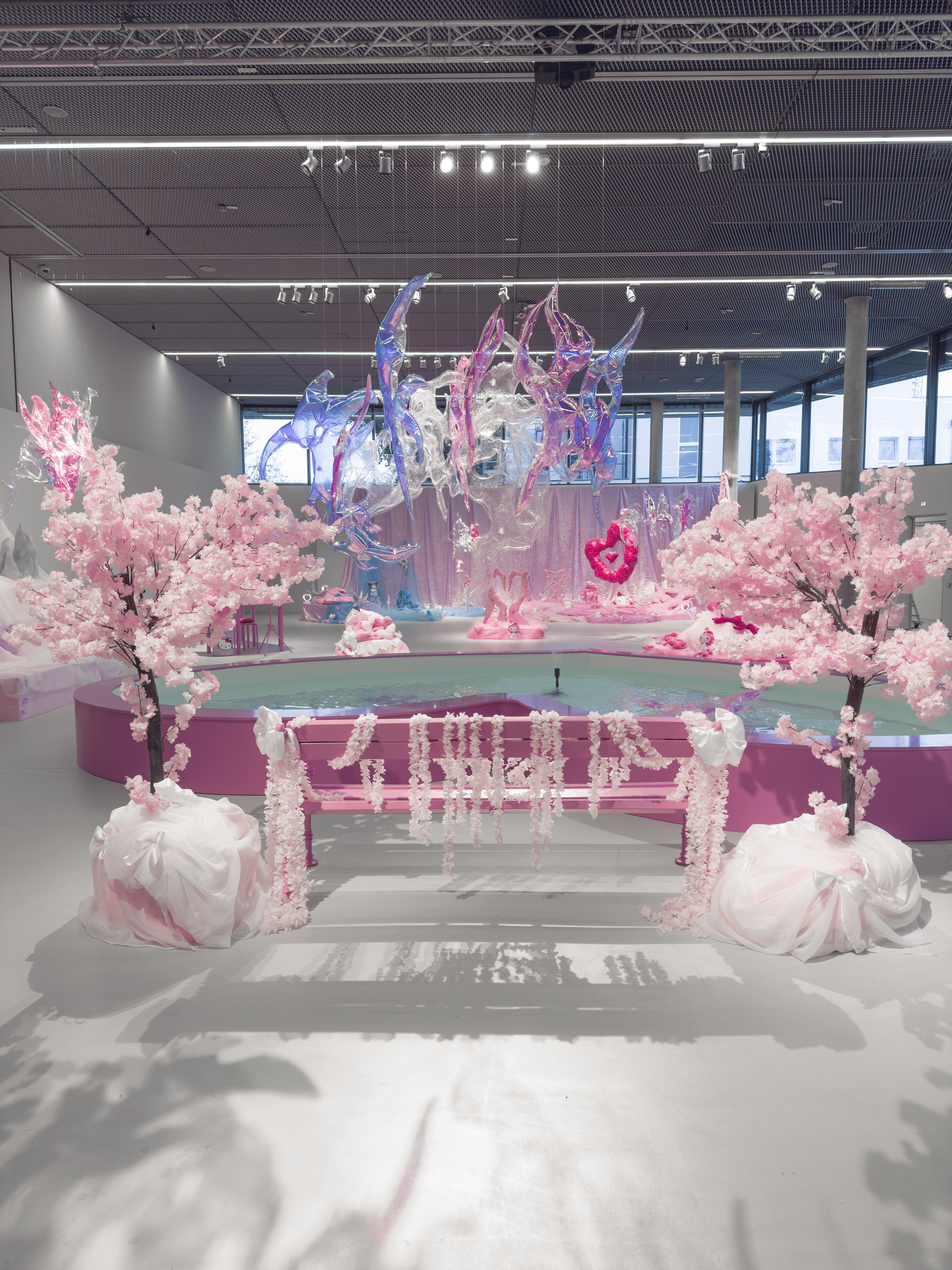
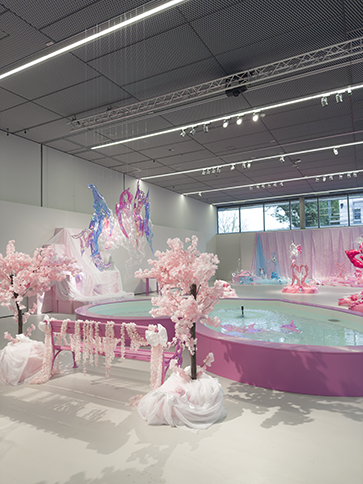
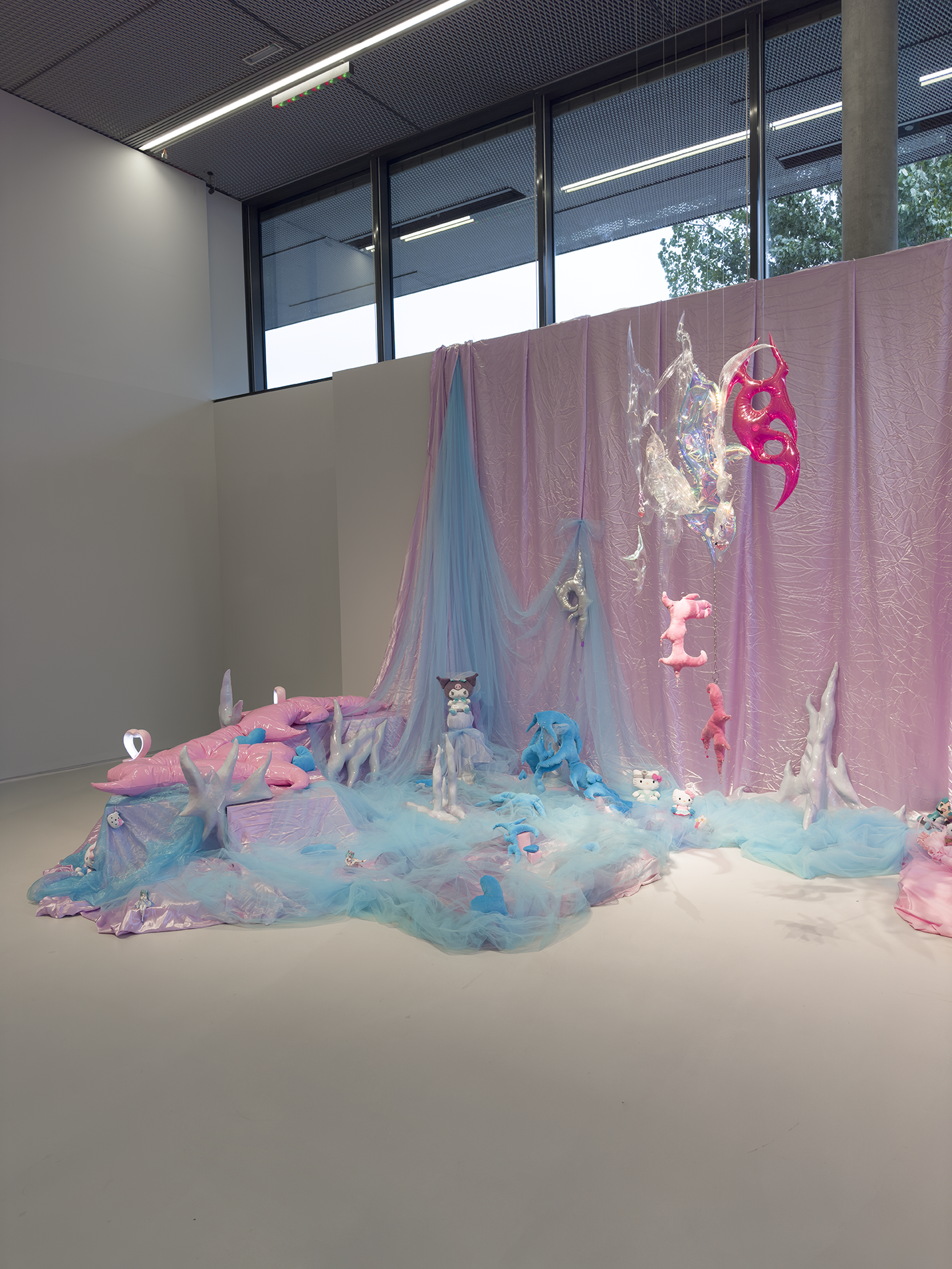
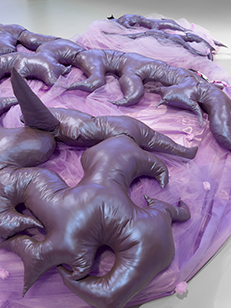
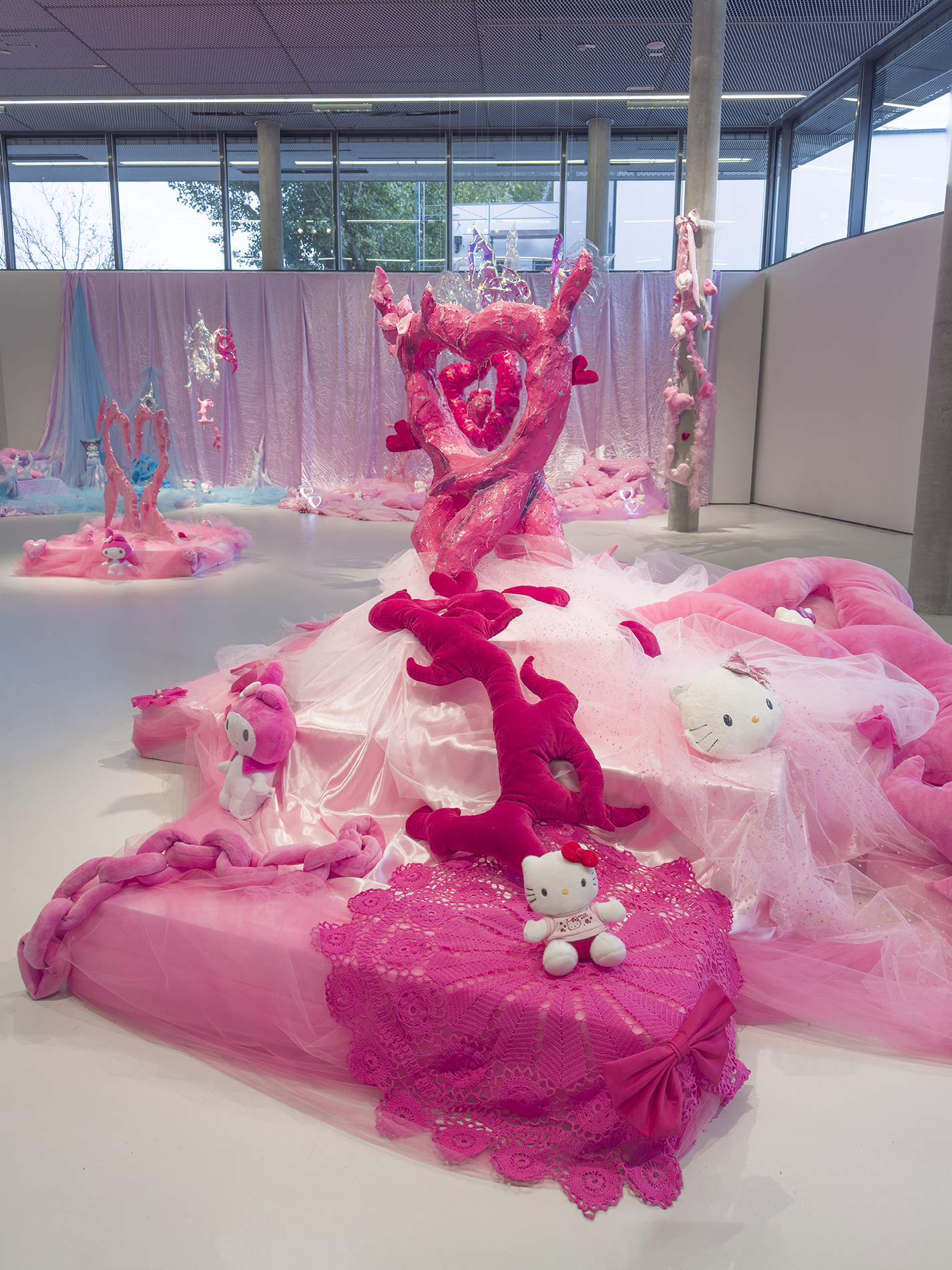
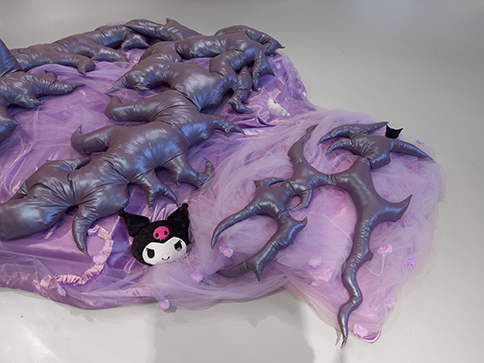
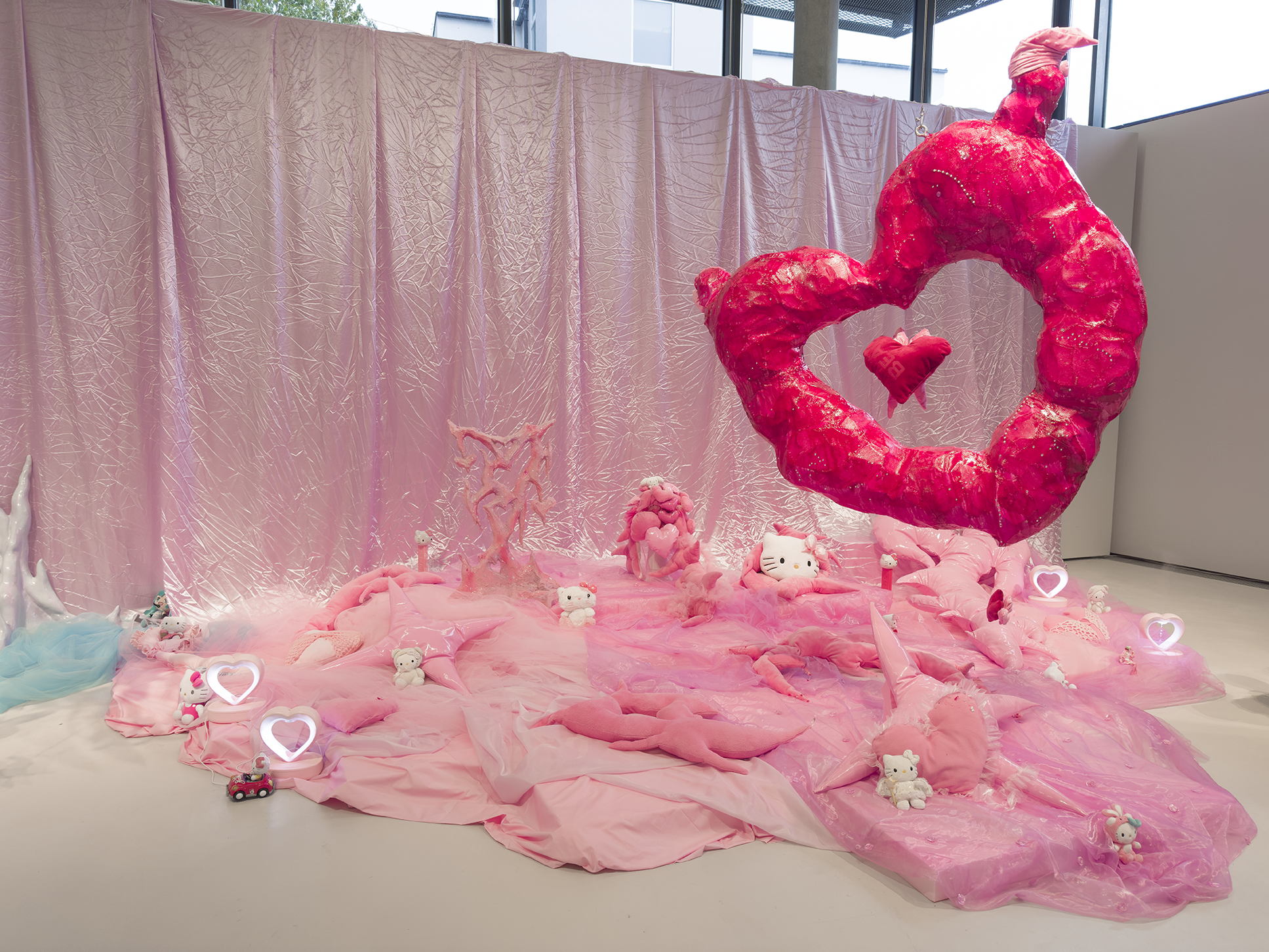
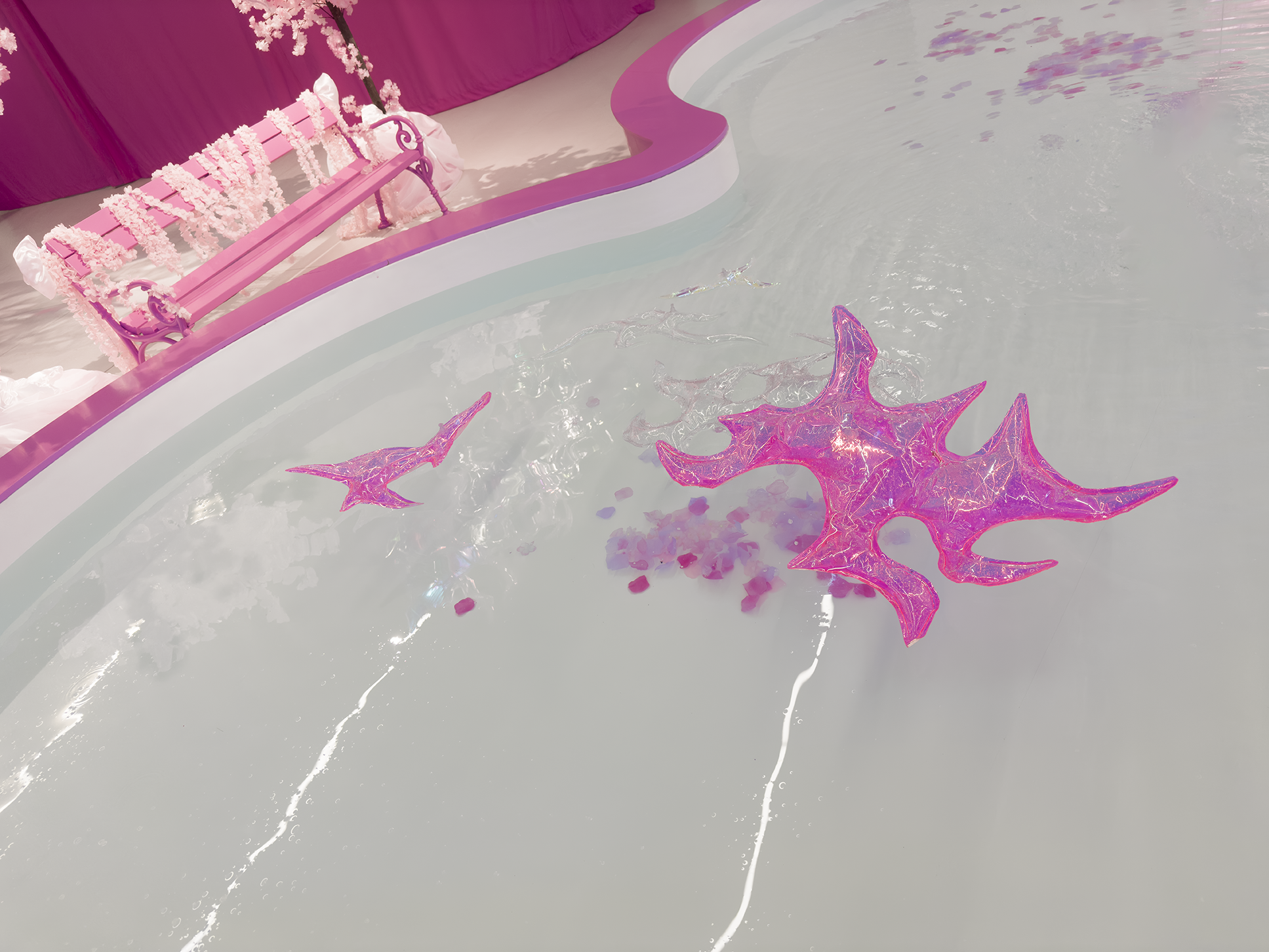

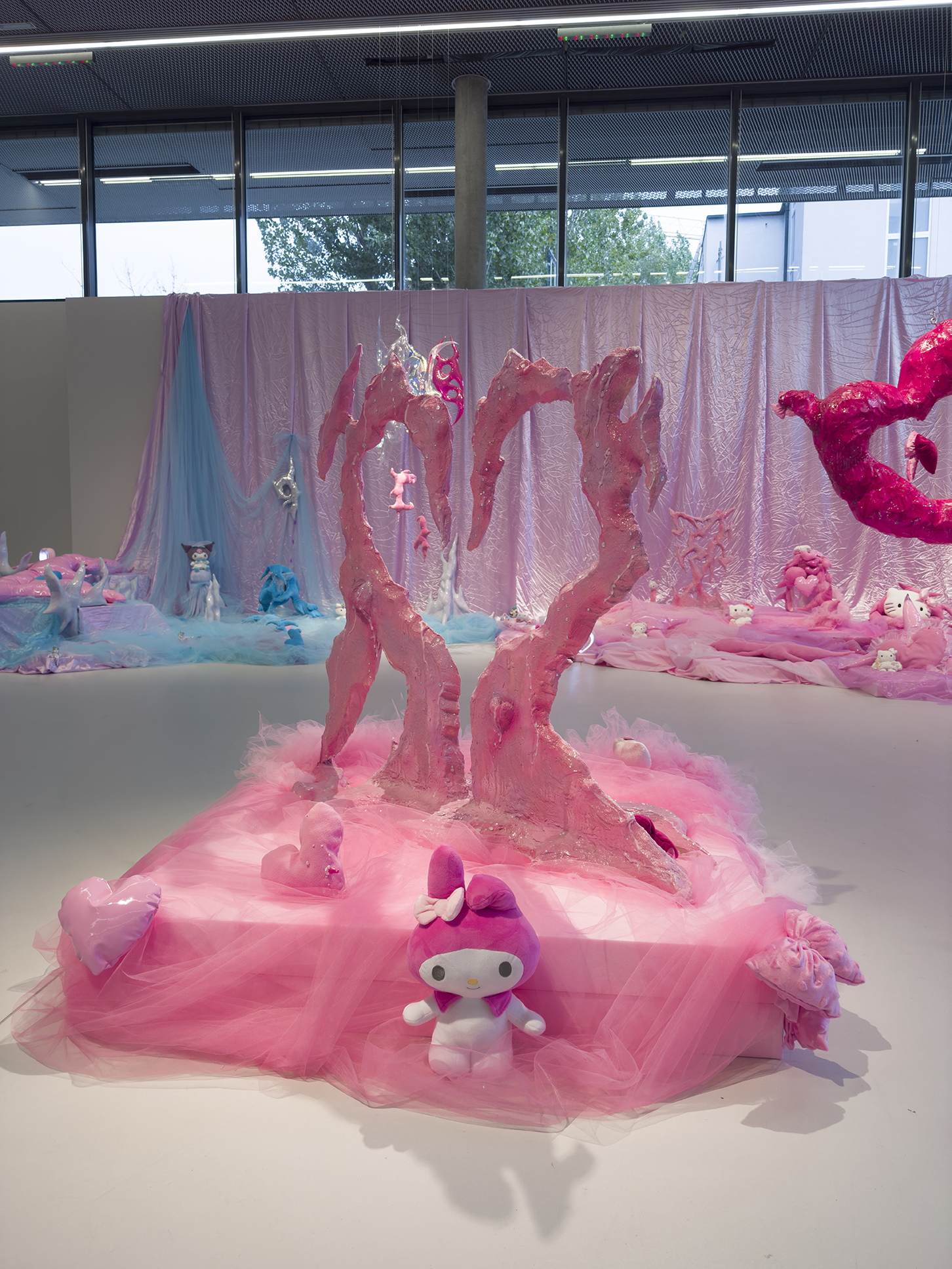
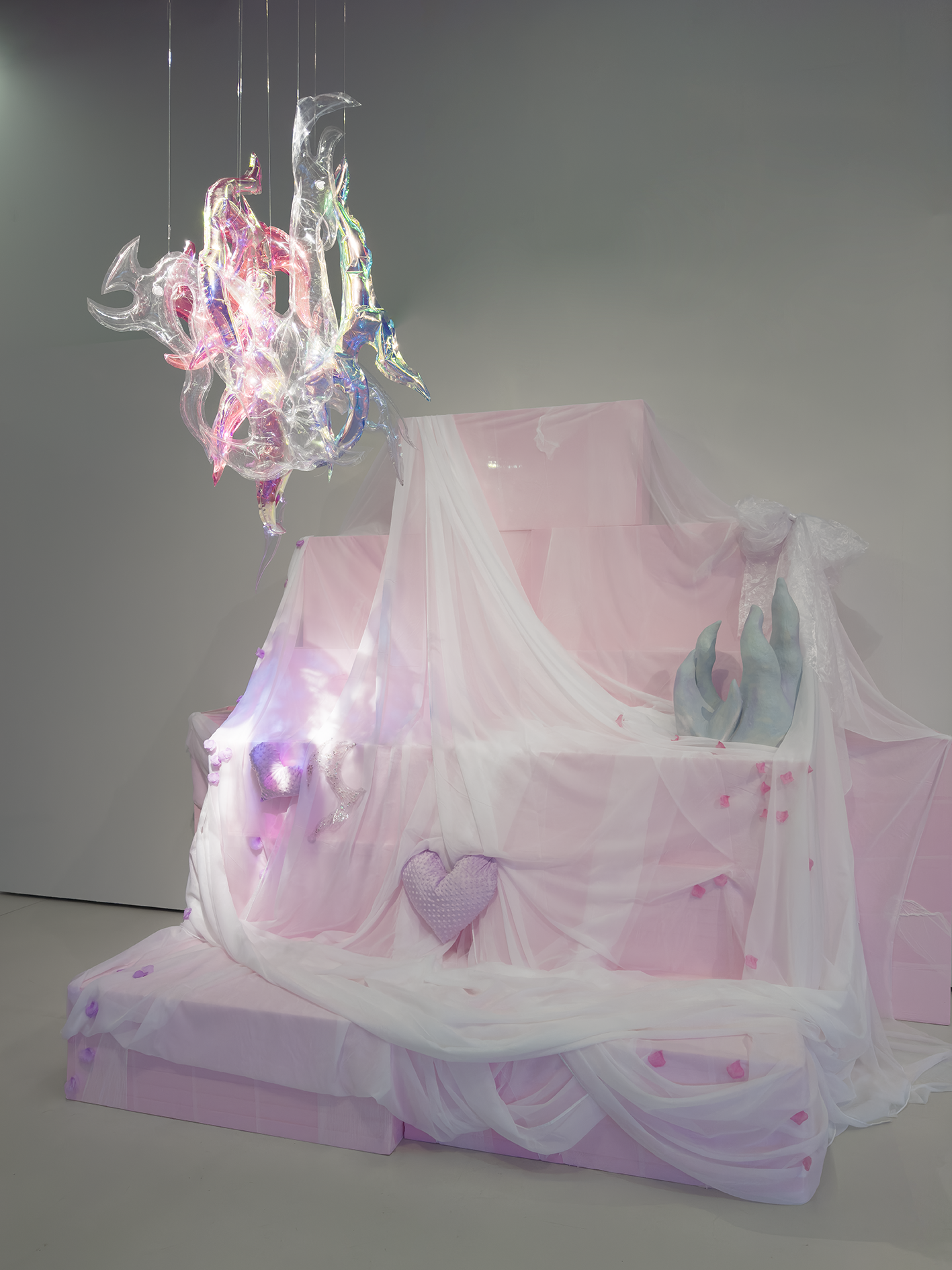
𝒅𝒊𝒗𝒆 𝒊𝒏𝒕𝒐 𝒎𝒆
2025
sculptures , gif on screen, sound
graduation project for MFA
“transmodular”
Neuer Kunstverein Wien, AT
https://aaa.dieangewandte.at/abschlussarbeiten
https://nkw.network/transmodular/
https://transmedialekunst.com/news/2025-06-23-transmodular/
sculptures , gif on screen, sound
graduation project for MFA
“transmodular”
Neuer Kunstverein Wien, AT
https://aaa.dieangewandte.at/abschlussarbeiten
https://nkw.network/transmodular/
https://transmedialekunst.com/news/2025-06-23-transmodular/
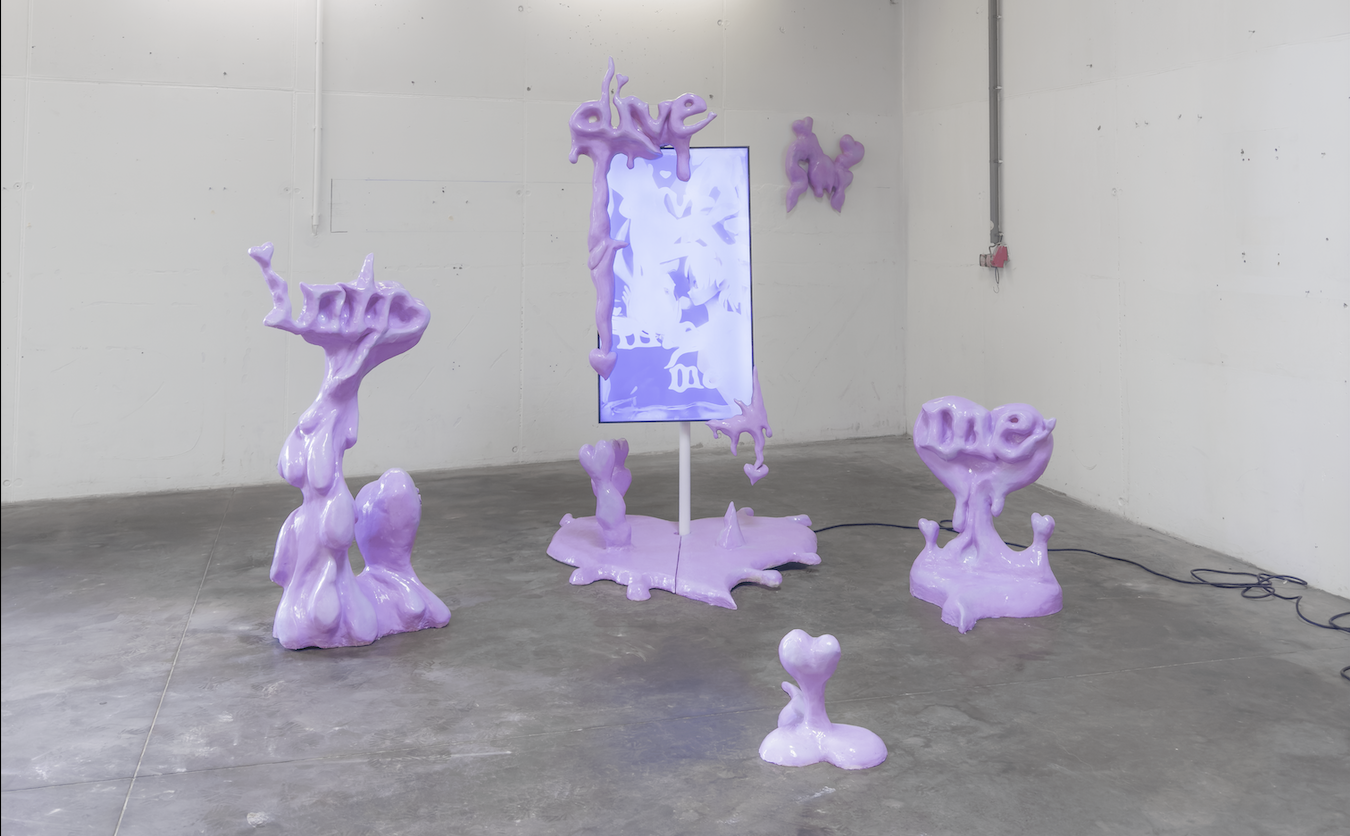
dim operates as a portal of lesbian futurity, a transmedia installation where sculpture, video, and sound merge into a field of sensual attention, suspended between the real and the ideal. She invites an encounter of reciprocity; a heart-to-heart intimacy that dissolves the boundaries between subject and object, self and other.
The work engages devotional technologies of attention, sustained acts of looking, reading, and touching that blur the line between research and romance. Drawing from digital queer archives, feminist poetics, and networked girlhood, dim transforms the scholarly impulse into an affective practice: theory becomes touch, reading becomes devotion, and every act of looking becomes an offering toward a shared lesbian utopia.
Rooted in a feminist politics of attention, the installation expands upon the decentralized epistemologies of girl theory, propagated across blogs, Substack essays, and digital archives. Within this ecology, scrolling, saving, and sharing emerge as gestures of resistance and care; queer desire functioning as both methodology and connective tissue, binding research, intimacy, and worldbuilding.
Anchored in an aqueous ontology, water operates as metaphor and medium for the circulation of desire, data, and intimacy. The screen leaks into the room; images liquefy into sculpture. You are asked to meet her with your whole being; to let the moment spill over, to merge. In uncertain times, to imagine a future becomes an act of resistance. dim channels desire as a mechanism for hope, transforming longing into a living infrastructure of queer relationality and utopian potential, realized in the now.
₊̣.̩✧*̣̩˚̣̣⁺̣‧.₊̣̇.‧⁺̣˚̣̣*̣̩⋆·̩̩.̩̥·̩̩⋆*̣̩˚̣̣⁺̣‧.₊̣̇.‧⁺̣˚̣̣*̣̩✧·.̩₊̣.̩₊̣.̩✧*̣̩˚̣̣⁺̣‧.₊̣̇.‧⁺̣˚̣̣*̣̩⋆·̩̩.̩̥·̩̩⋆*̣̩˚̣̣⁺̣‧.₊̣̇.‧⁺̣˚̣̣*̣̩✧·.̩₊̣.̩₊̣.̩✧*̣̩˚̣̣⁺̣‧.₊̣̇.‧⁺̣˚̣̣*̣̩⋆·̩̩.̩̥·̩̩⋆*̣̩˚̣̣⁺̣‧.₊̣̇.‧⁺̣˚̣̣*̣̩✧·.̩₊̣.̩₊̣.̩✧*̣̩˚̣̣⁺̣‧.₊̣̇.‧⁺̣˚̣̣*̣̩⋆·̩̩.̩̥·̩̩⋆*̣̩˚̣̣⁺̣‧.₊̣̇.‧⁺̣˚̣̣*̣̩✧·.̩₊̣.̩₊̣.̩✧*̣̩˚̣̣⁺̣‧.₊̣̇.‧⁺̣˚̣̣*̣̩⋆·̩̩.̩̥·̩̩⋆*̣̩˚̣̣⁺̣‧.₊
please have a look through my entire masters diploma thesis here....
melting into you
2024
3 sculptures , 1 video, sound
“Passage”
Sammlung Falckenberg, Deichtorhallen
Hamburg, DE
“crawling home”
Pop-Up Gallery Salzburg, AT
3 sculptures , 1 video, sound
“Passage”
Sammlung Falckenberg, Deichtorhallen
Hamburg, DE
“crawling home”
Pop-Up Gallery Salzburg, AT
We need to be able to imagine - to make it real.
In online queer spaces, imagination runs free, directly from the source, where marginalized identities find refuge, exploring and connecting underneath the waves. Taking on avatars, the personal becomes abstracted in the virtual. Liberated from fears of repercussion and stigmatisation, exploration flows freely, uncovering what is hidden behind the surface. I reach out my hand towards you, breaking the tension, as the water rushes over us, uniting our bodies, just like our hearts have been united online <3
In online queer spaces, imagination runs free, directly from the source, where marginalized identities find refuge, exploring and connecting underneath the waves. Taking on avatars, the personal becomes abstracted in the virtual. Liberated from fears of repercussion and stigmatisation, exploration flows freely, uncovering what is hidden behind the surface. I reach out my hand towards you, breaking the tension, as the water rushes over us, uniting our bodies, just like our hearts have been united online <3
The feeling is too big,
the video is f
l
o
w
i
n
g
out of the screen, it can not be contained anymore,
my words are floating on the stream towards
you .。.:*♡
eroding whatever stands in our way, the boundaries have melted away, its our reality.....˚ *•̩̩͙ ✩.
the video is f
l
o
w
i
n
g
out of the screen, it can not be contained anymore,
my words are floating on the stream towards
you .。.:*♡
eroding whatever stands in our way, the boundaries have melted away, its our reality.....˚ *•̩̩͙ ✩.
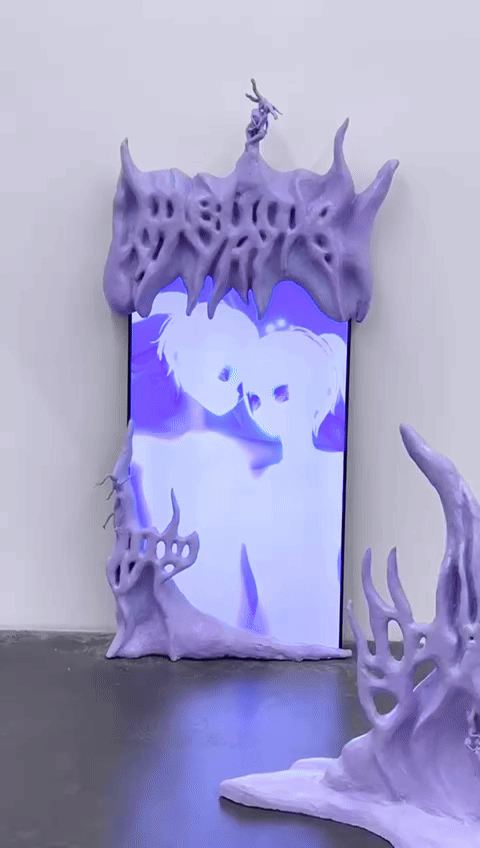
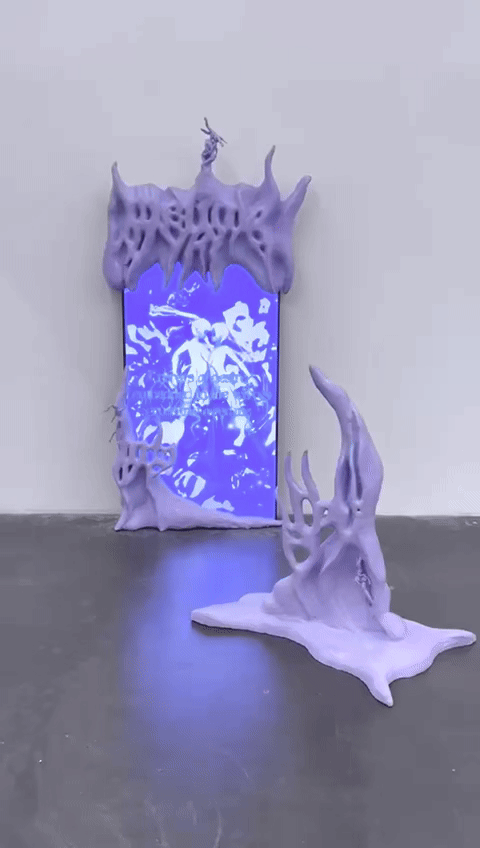
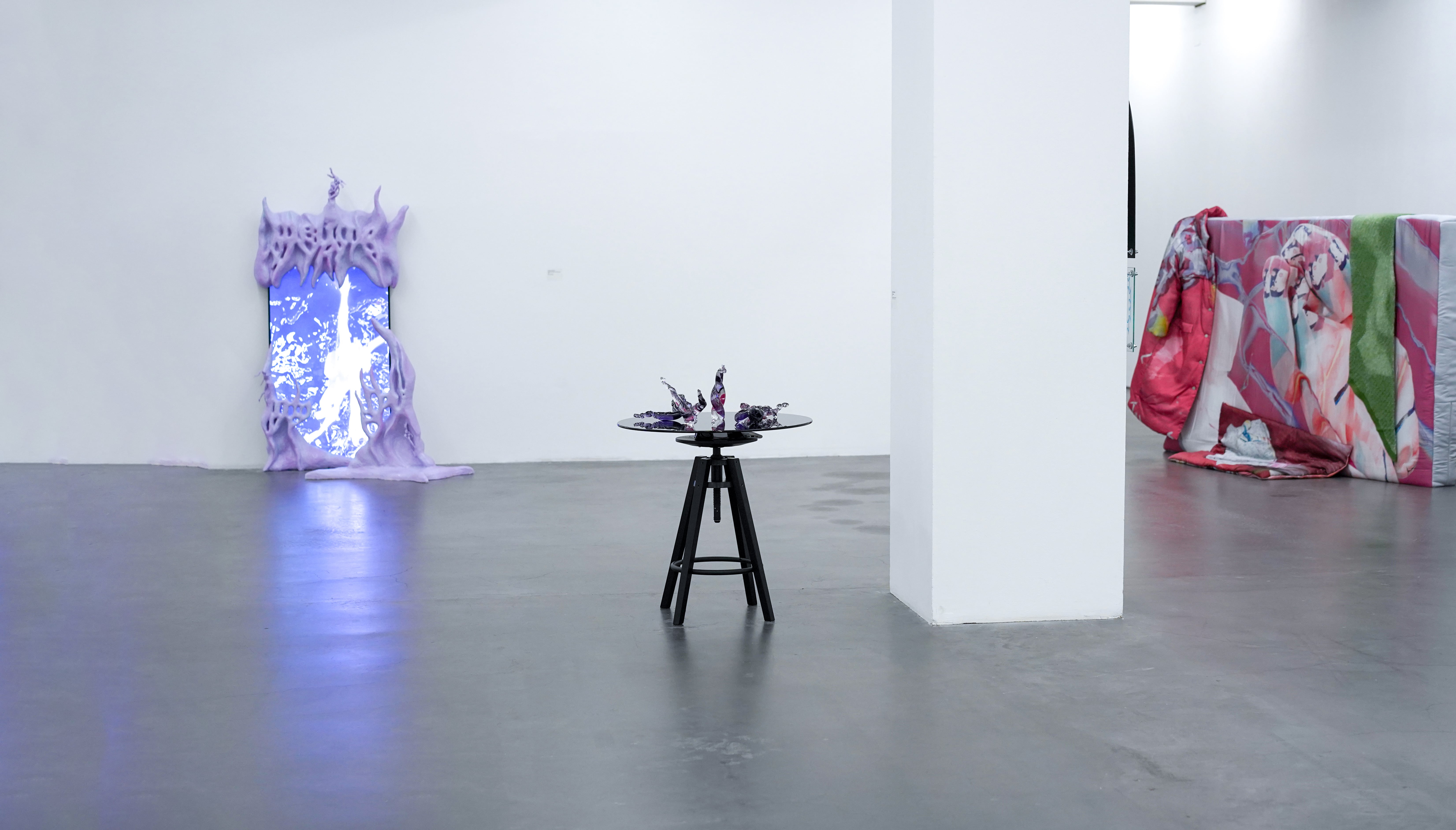
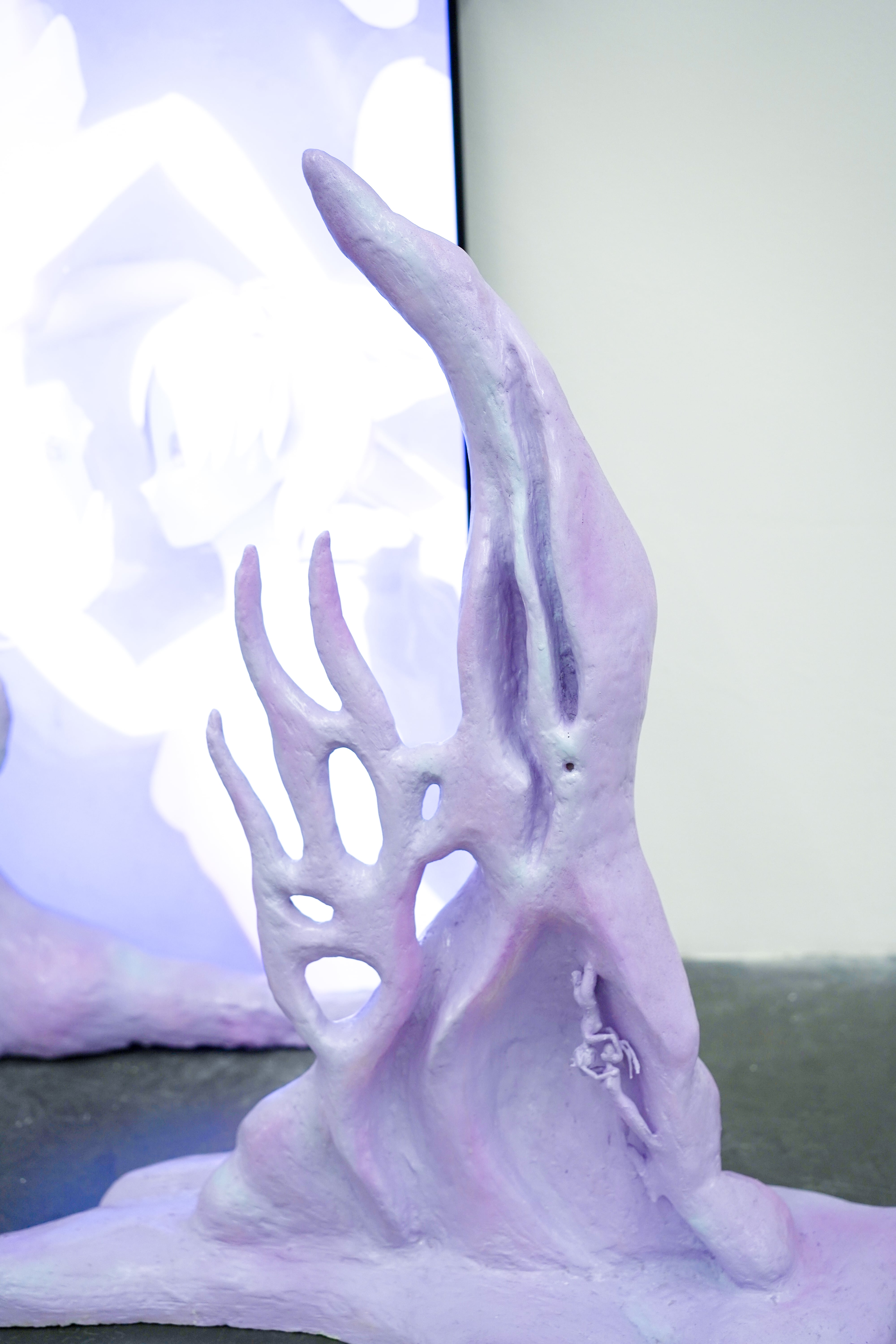
𝓲 𝓸𝓷𝓵𝔂 𝔀𝓪𝓷𝓽 𝓲𝓽 𝔀𝓱𝓮𝓷 𝓲𝓽 𝓯𝓮𝓮𝓵𝓼 𝓵𝓲𝓴𝓮 𝓽𝓱𝓲𝓼
2024
sculptures , 3 videos, sound
“all the feels”
curated by Nora Mayr
Kunstraum Niederösterreich
Vienna, AT
sculptures , 3 videos, sound
“all the feels”
curated by Nora Mayr
Kunstraum Niederösterreich
Vienna, AT
Soft light, liquid color, and ambient whispers shape a dreamlike environment where digital and material worlds fold into one another. A translucent fabric waterfall descends from the ceiling, tinted in cyan and lavender hues, pooling onto the floor in an iridescent tide. From within this cascading surface, screens emerge—portals showing alternate sides of the same watery threshold. Across them, an avatar reaches through the current, through the interface, extending a gesture that moves between intimacy and impossibility, desire and distance.
Around the central structure, pastel resin sculptures ripple outward, forming a terrain that connects the installation to the walls of the gallery. The surfaces shimmer like frozen waves, their biomorphic forms recalling bodies mid-transformation—melting, merging, dissolving. On a distant screen, two digital figures intertwine beneath undulating water, while a poem unfurls over them in a slow rhythm, echoing the murmurs that fill the space.
The installation conjures a speculative, lesbian-coded cyberscape—a place of fluid connection and queer longing, where touch transcends screens and matter drifts between states. It invites the viewer into a soft, utopian elsewhere, one that imagines technology not as barrier, but as a vessel for tenderness, dissolution, and becoming.
The installation conjures a speculative, lesbian-coded cyberscape—a place of fluid connection and queer longing, where touch transcends screens and matter drifts between states. It invites the viewer into a soft, utopian elsewhere, one that imagines technology not as barrier, but as a vessel for tenderness, dissolution, and becoming.
